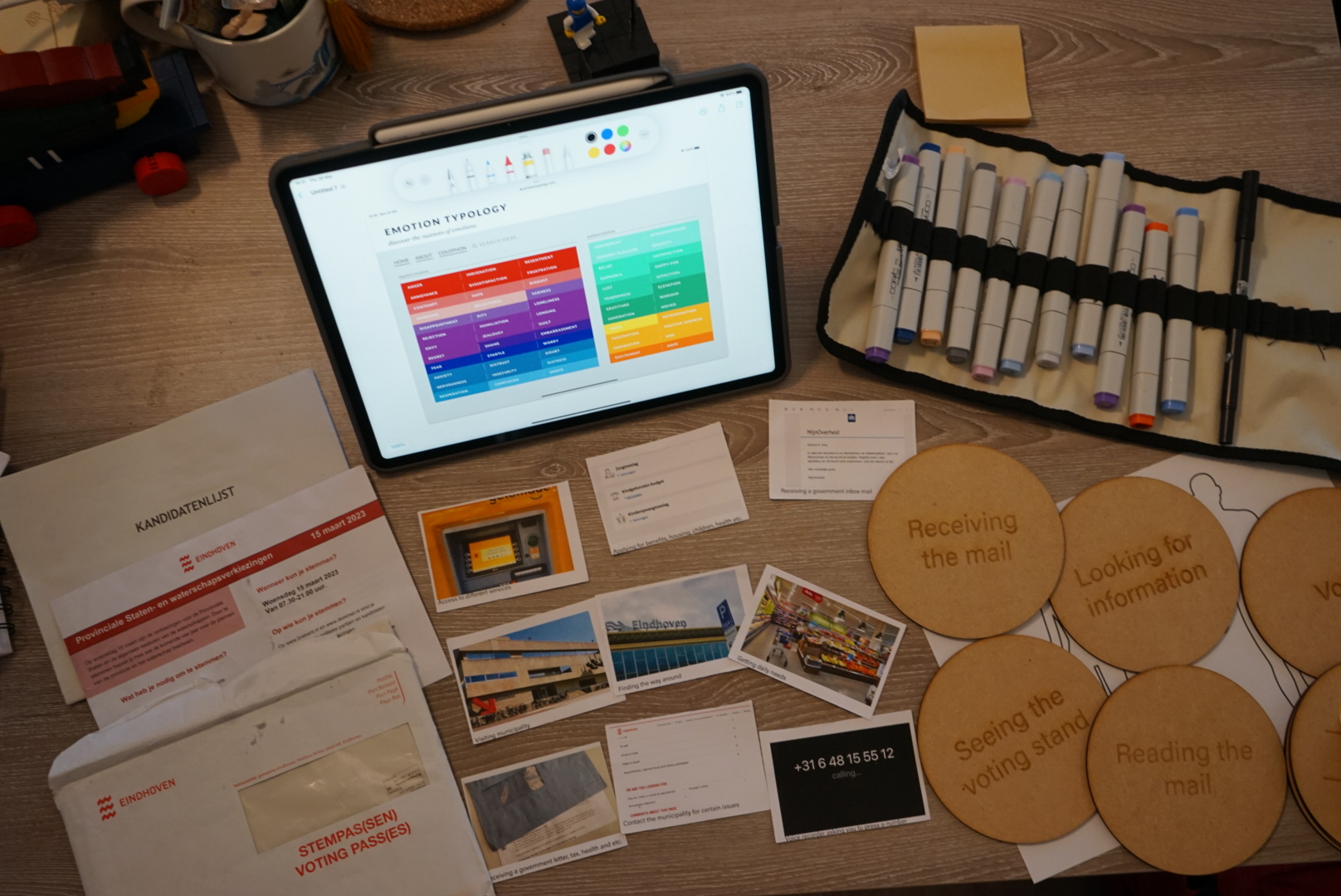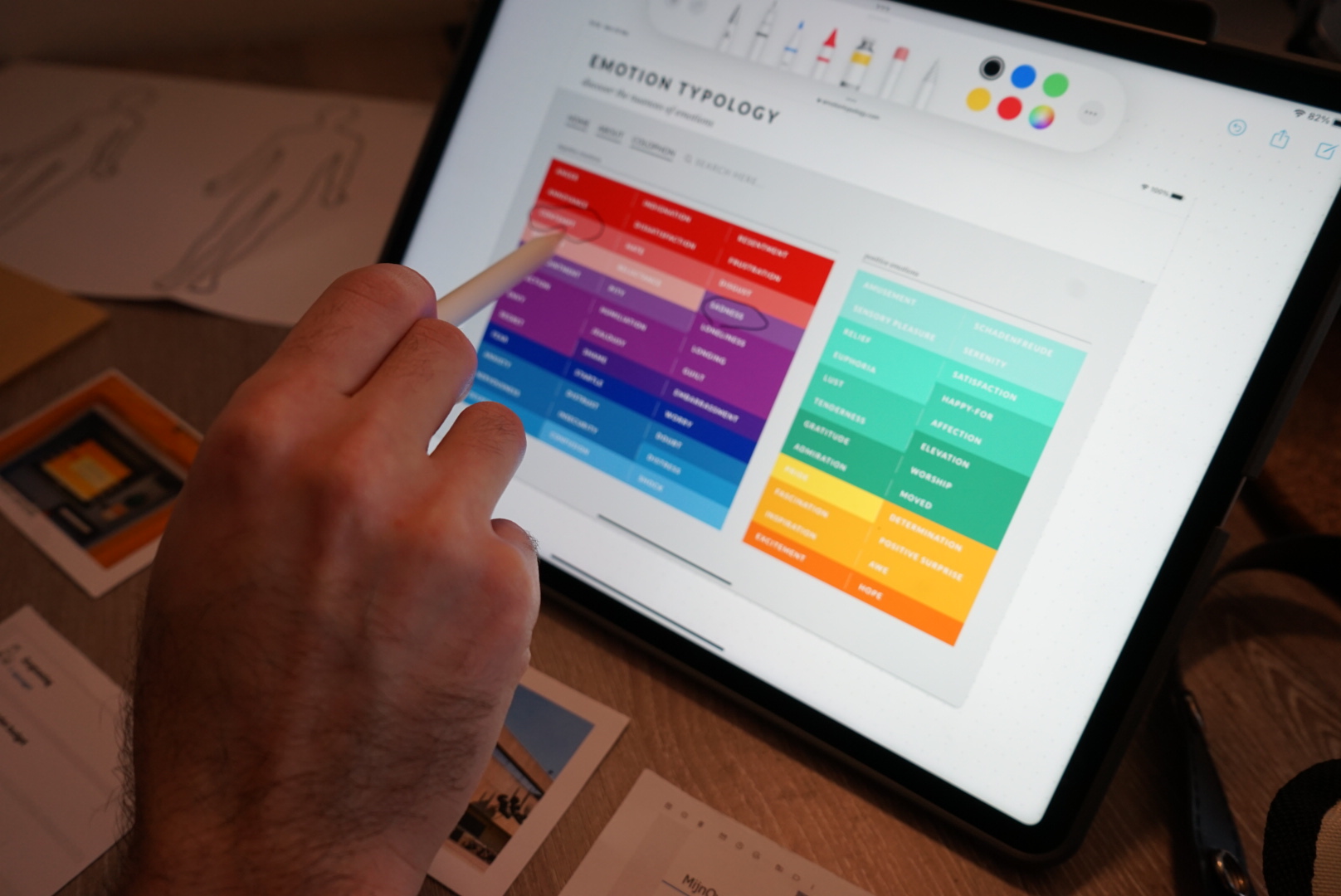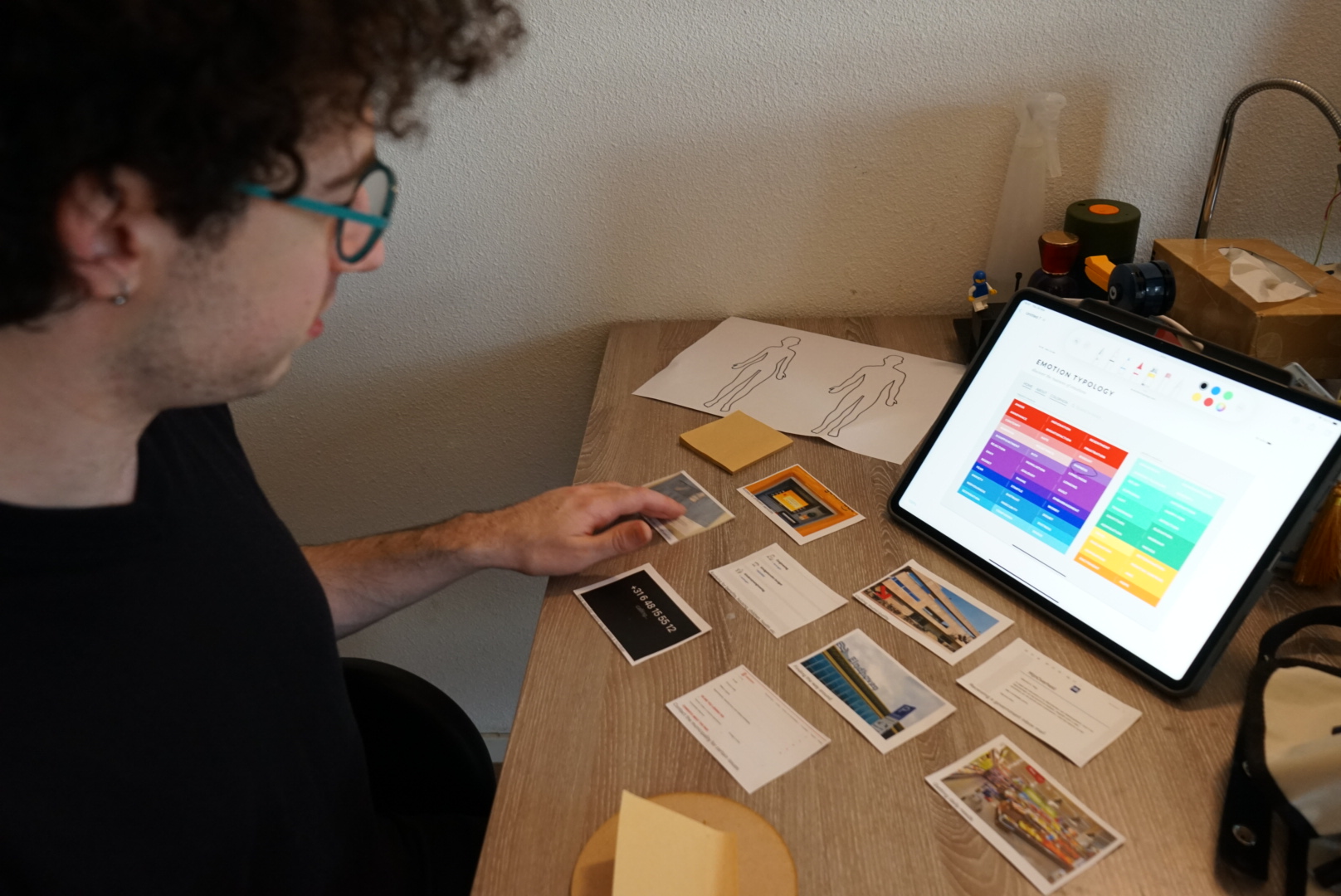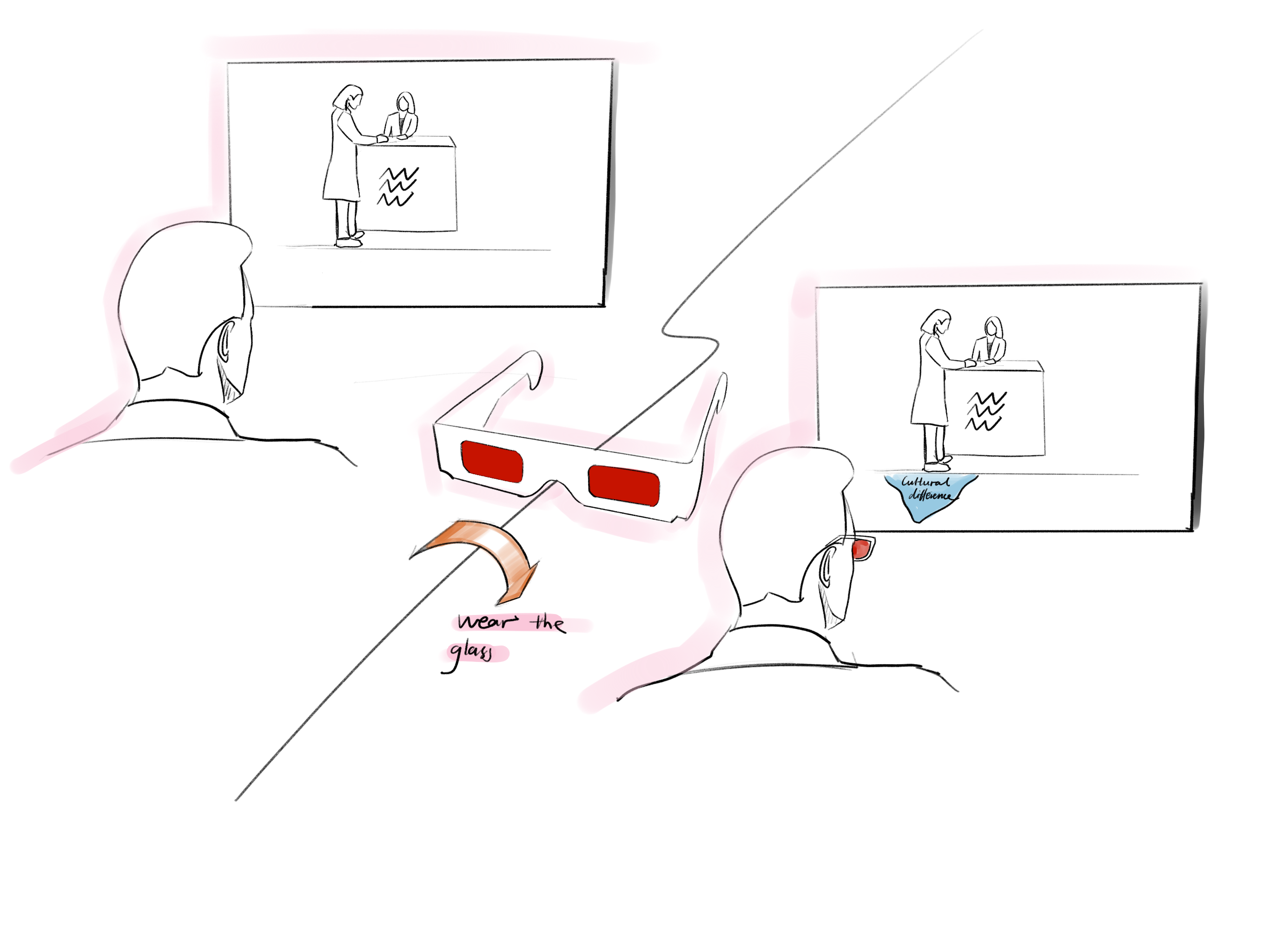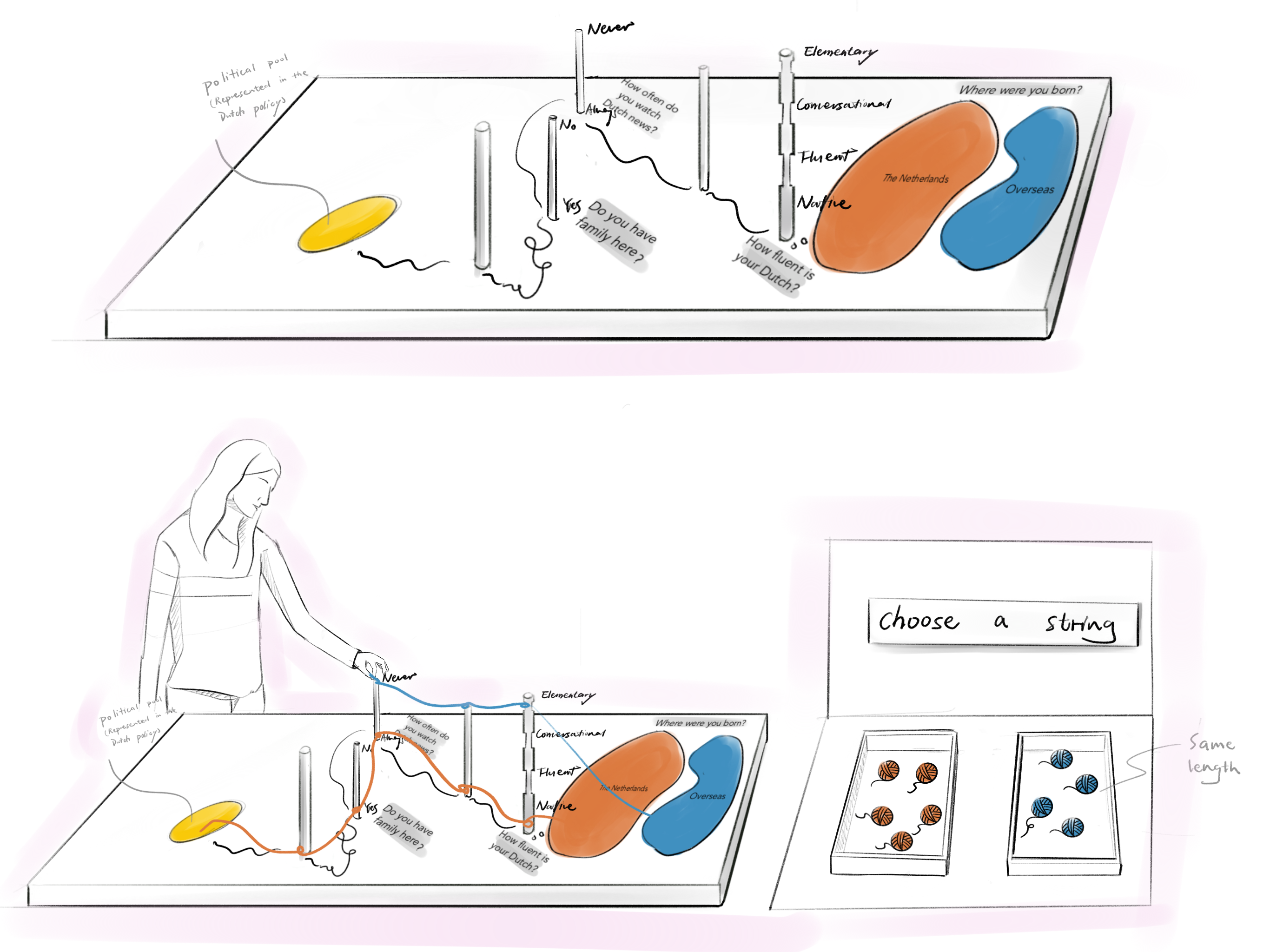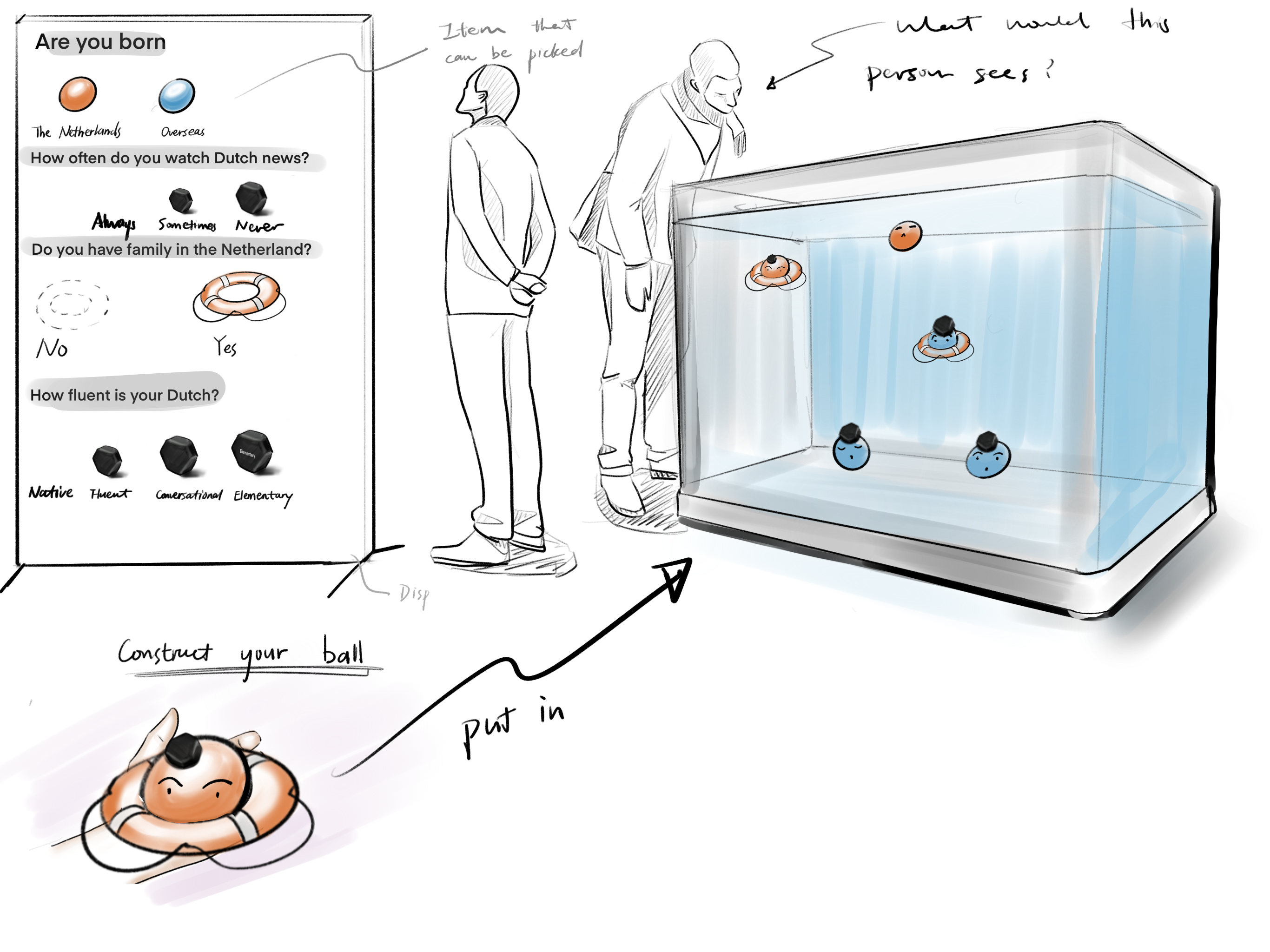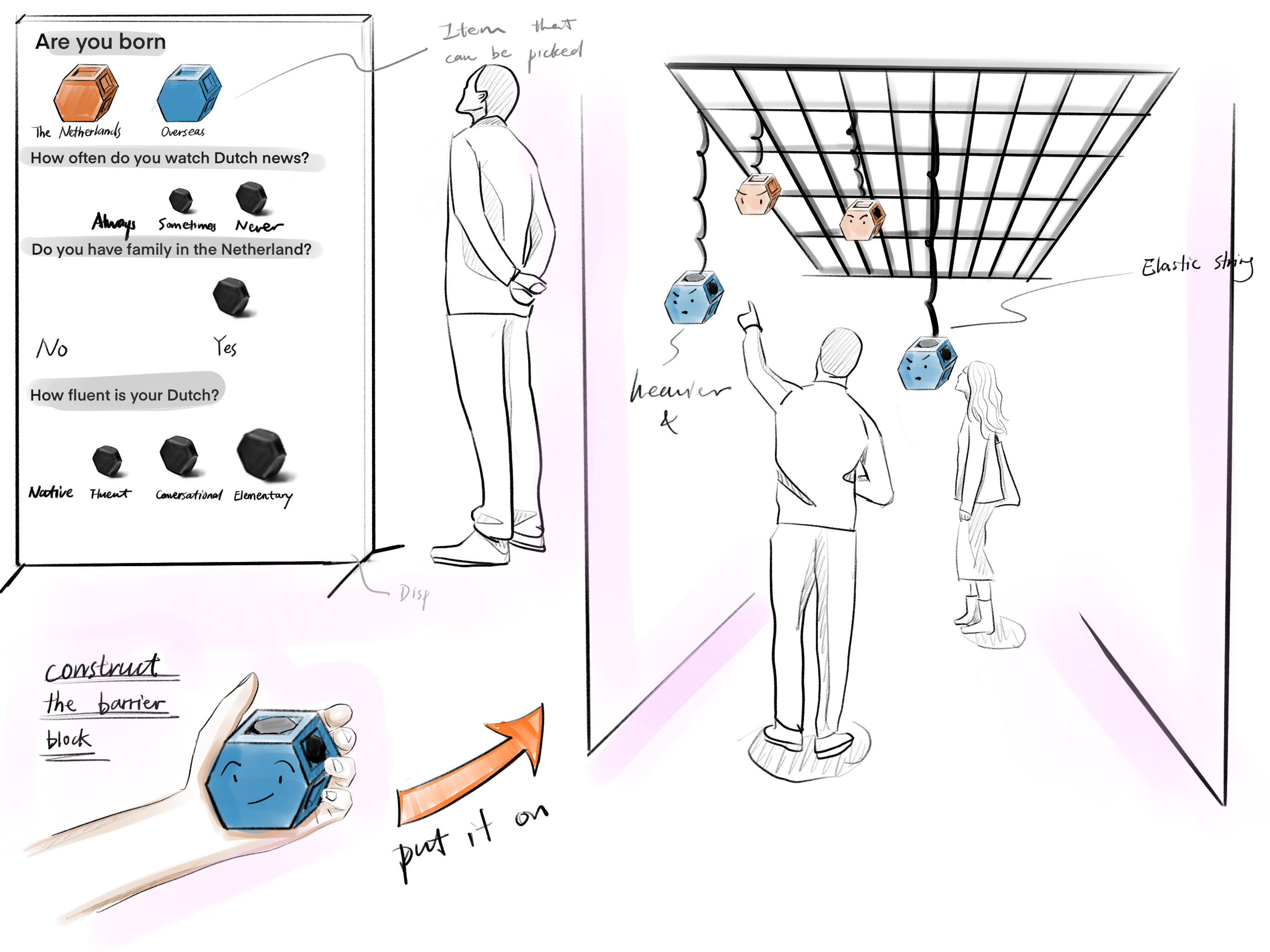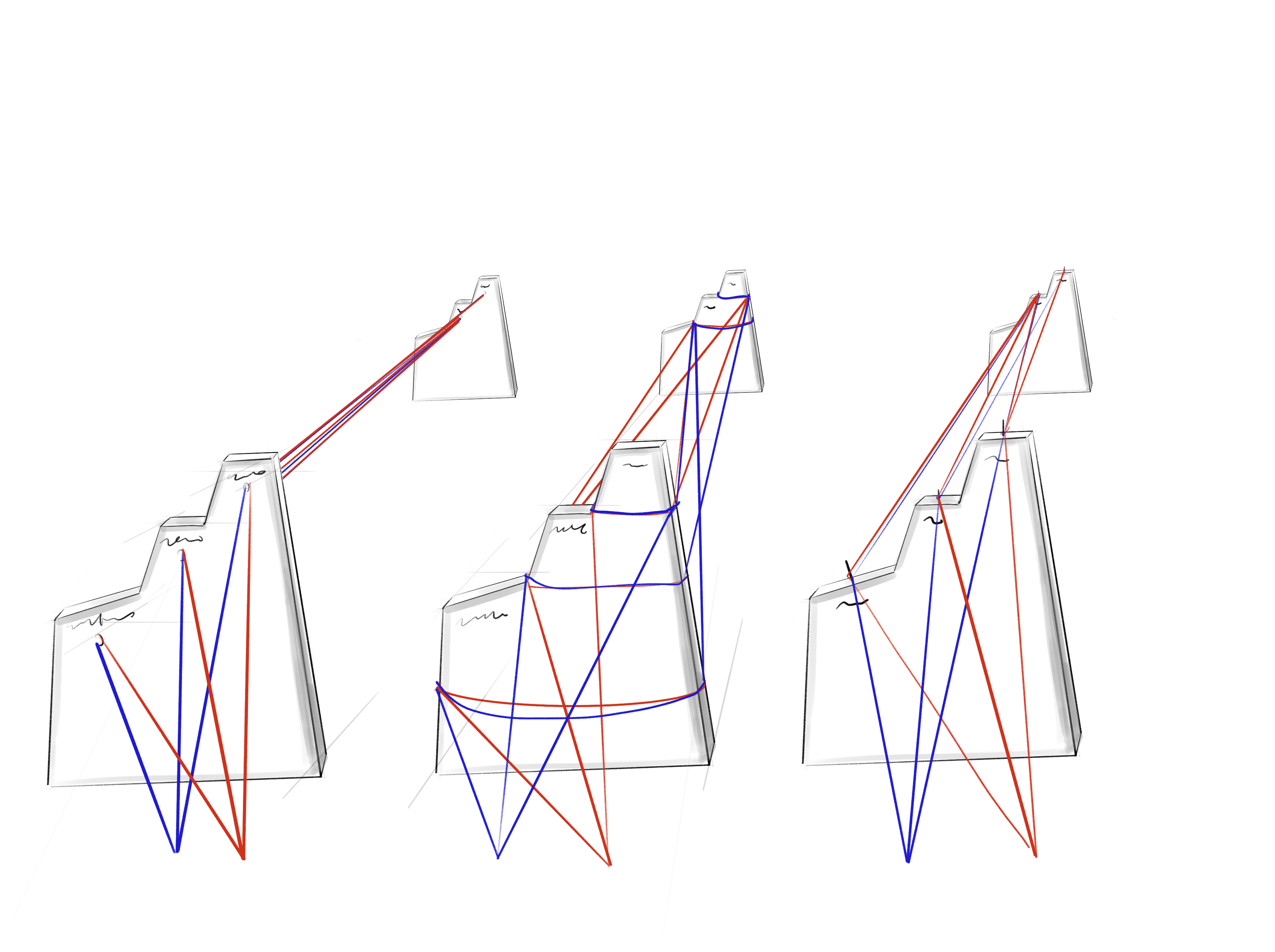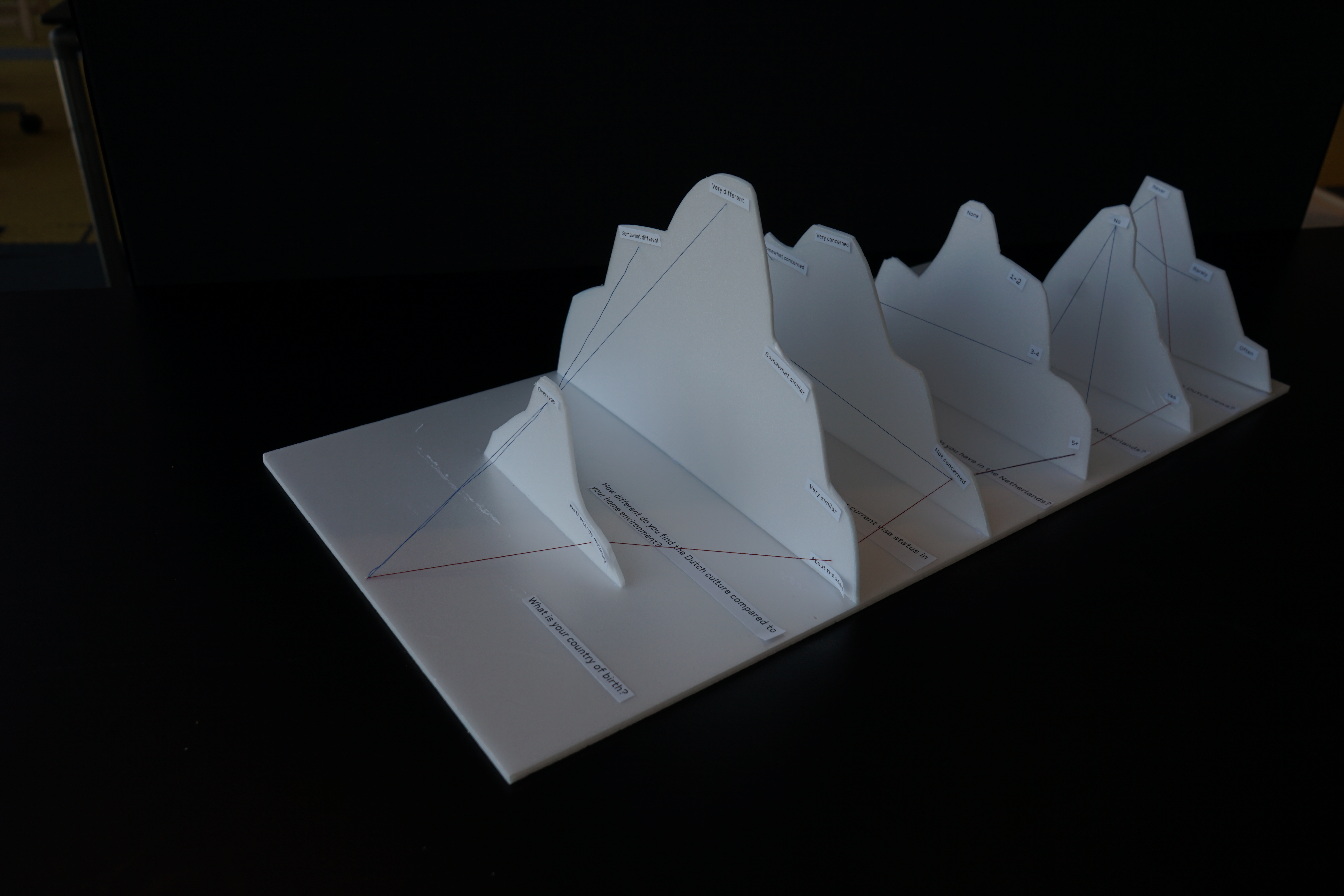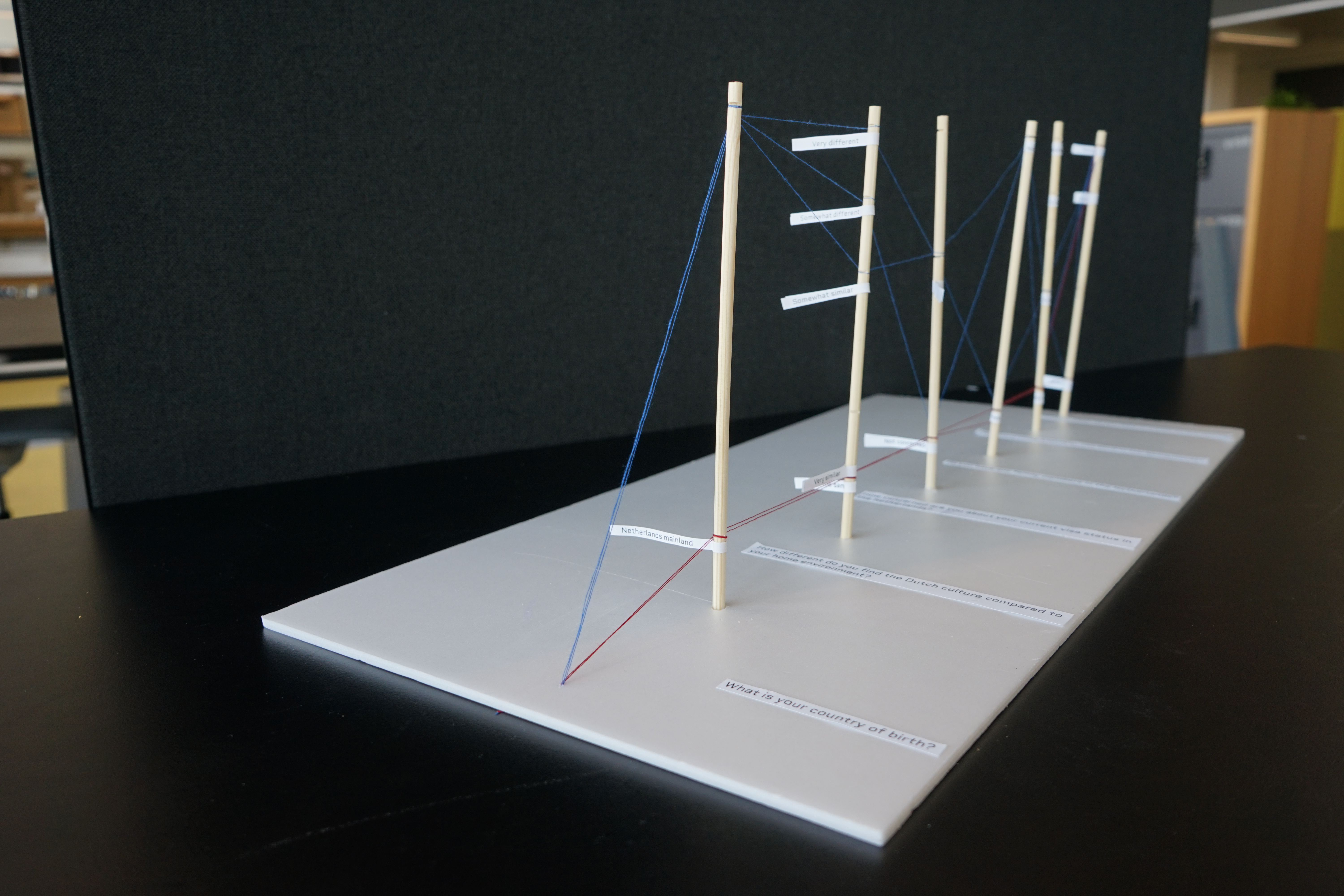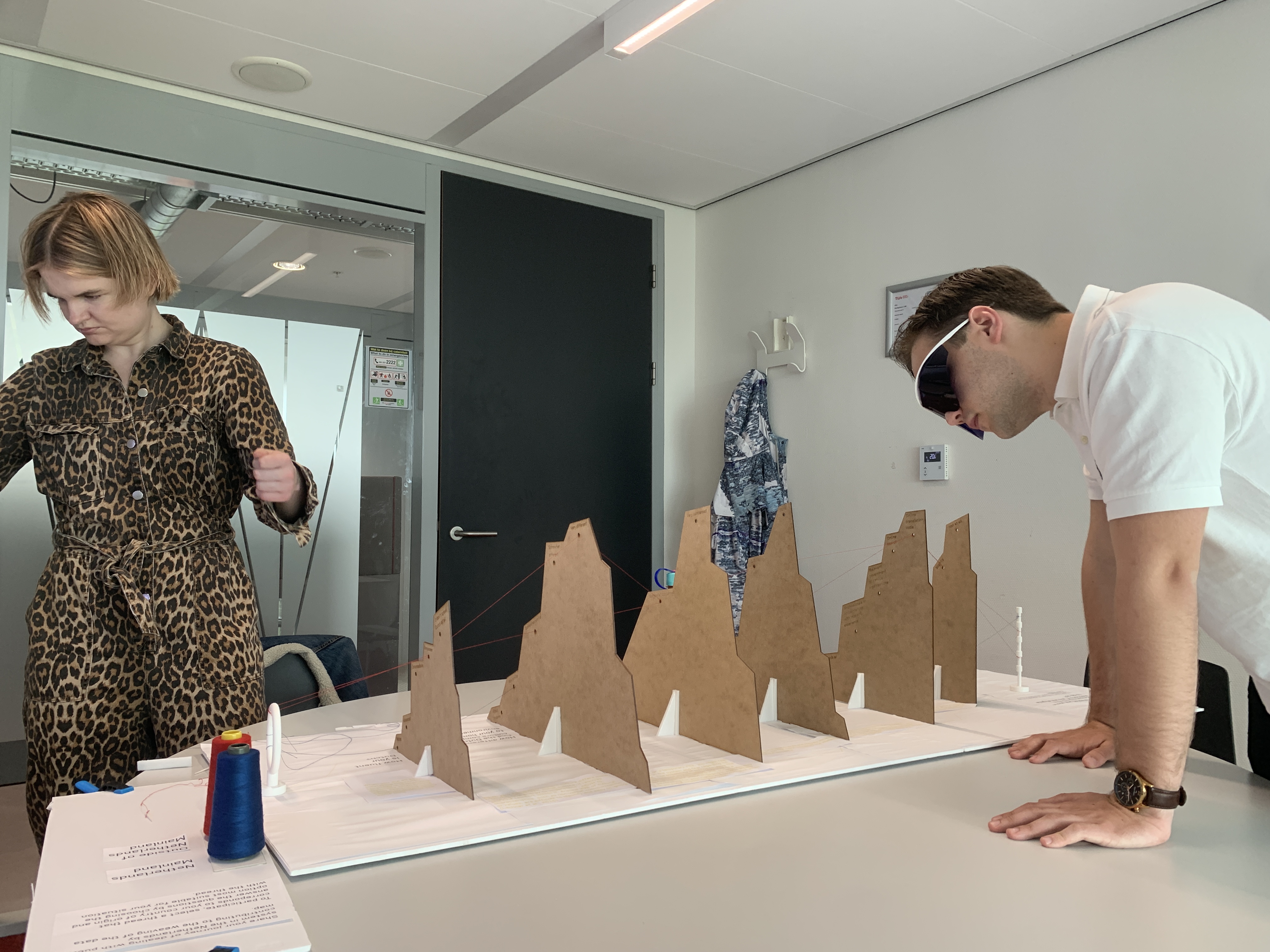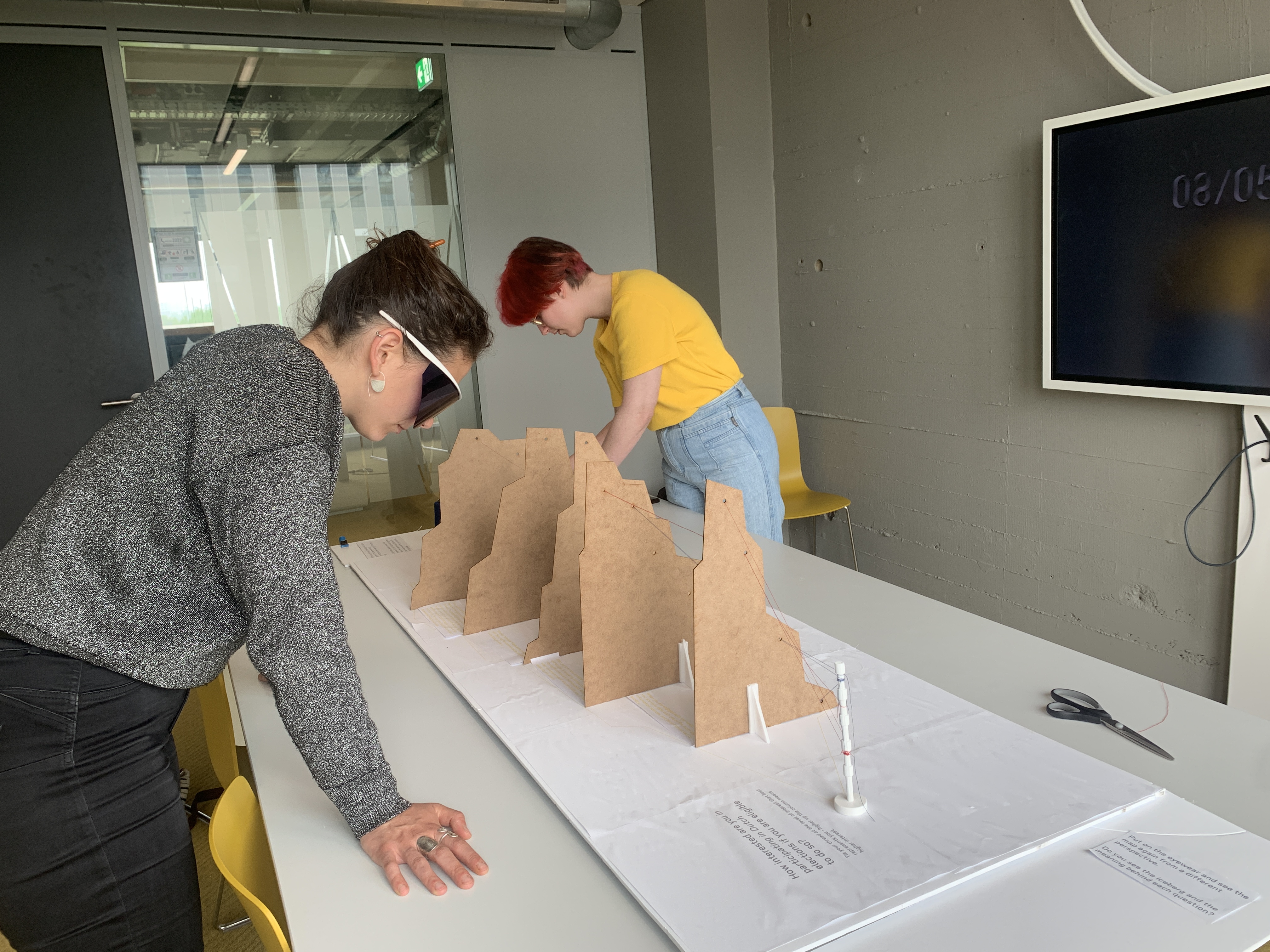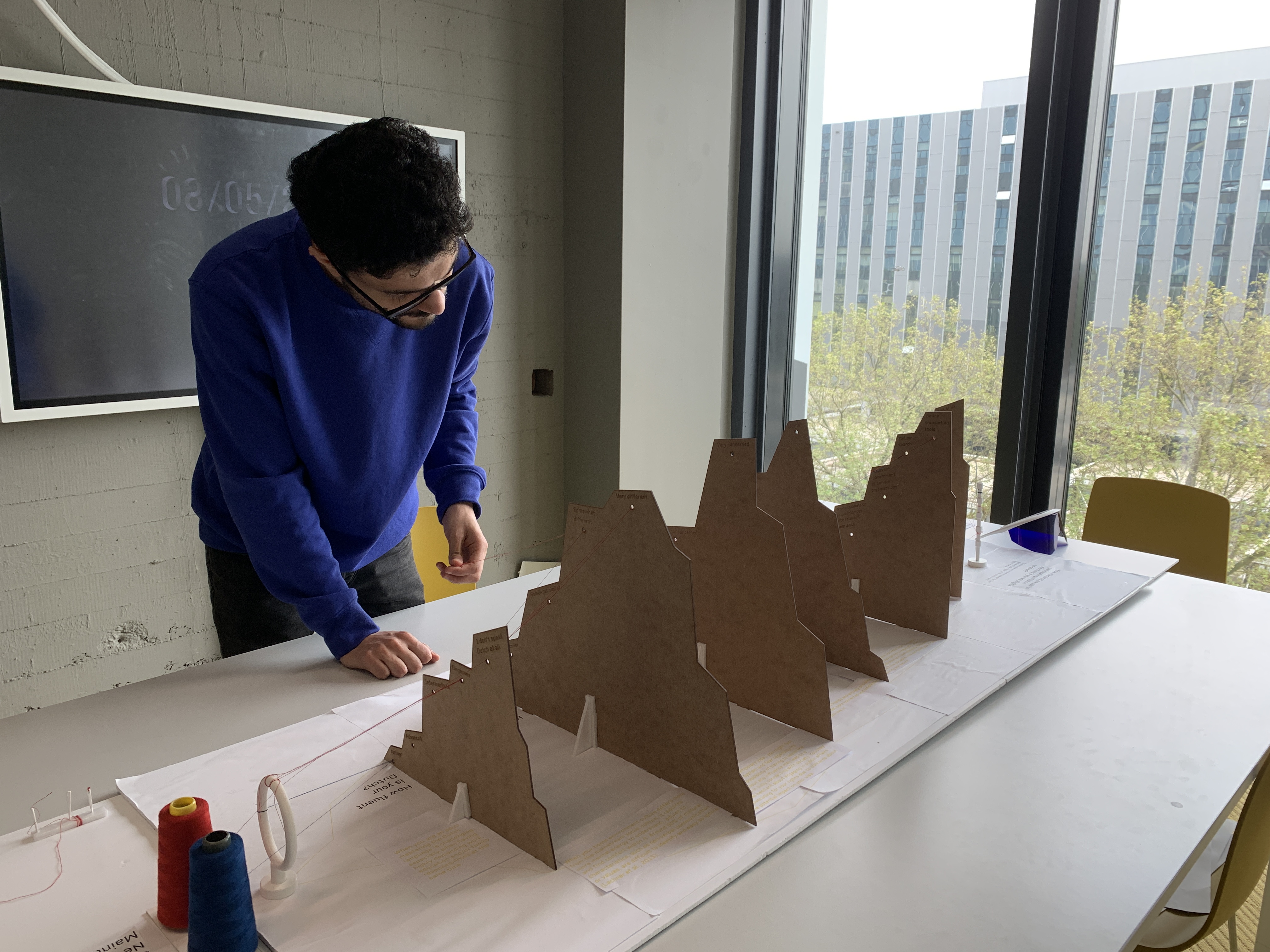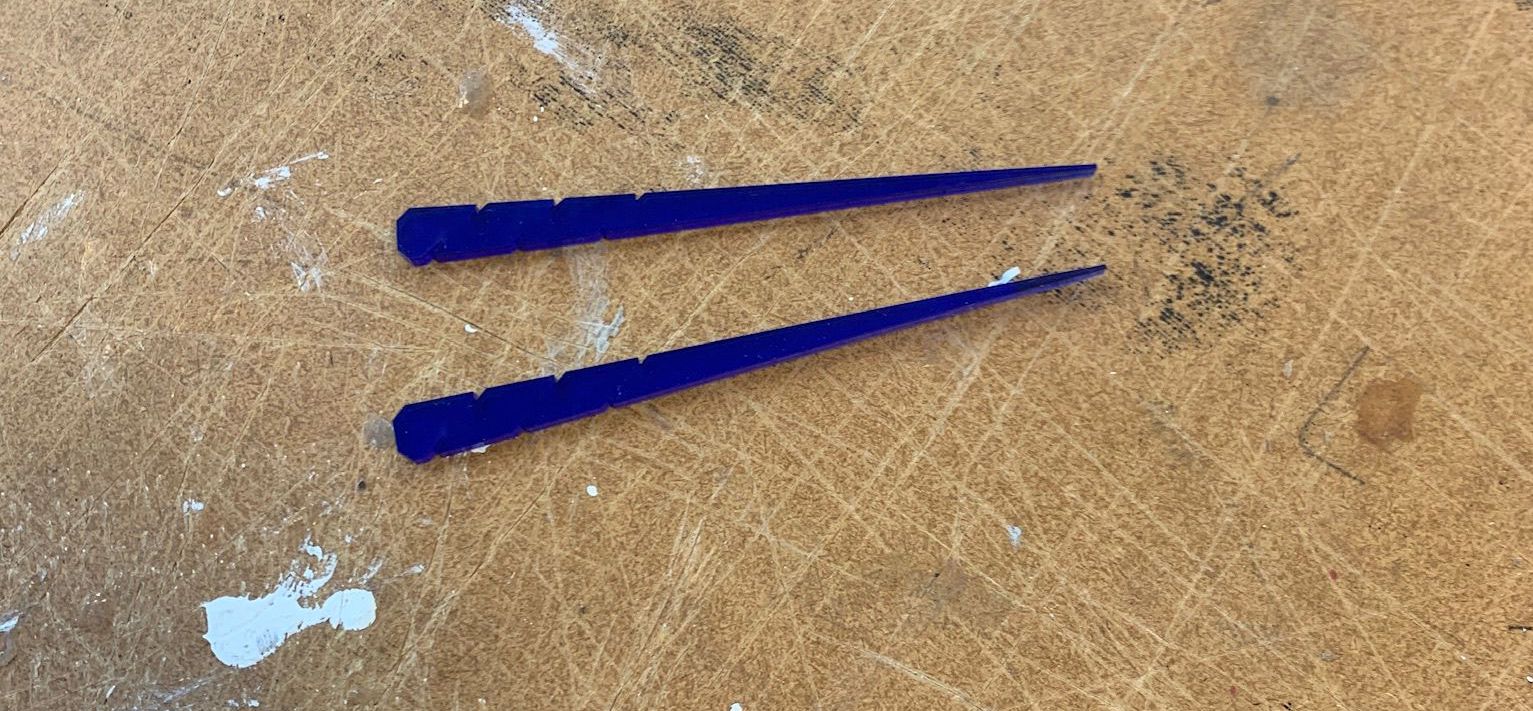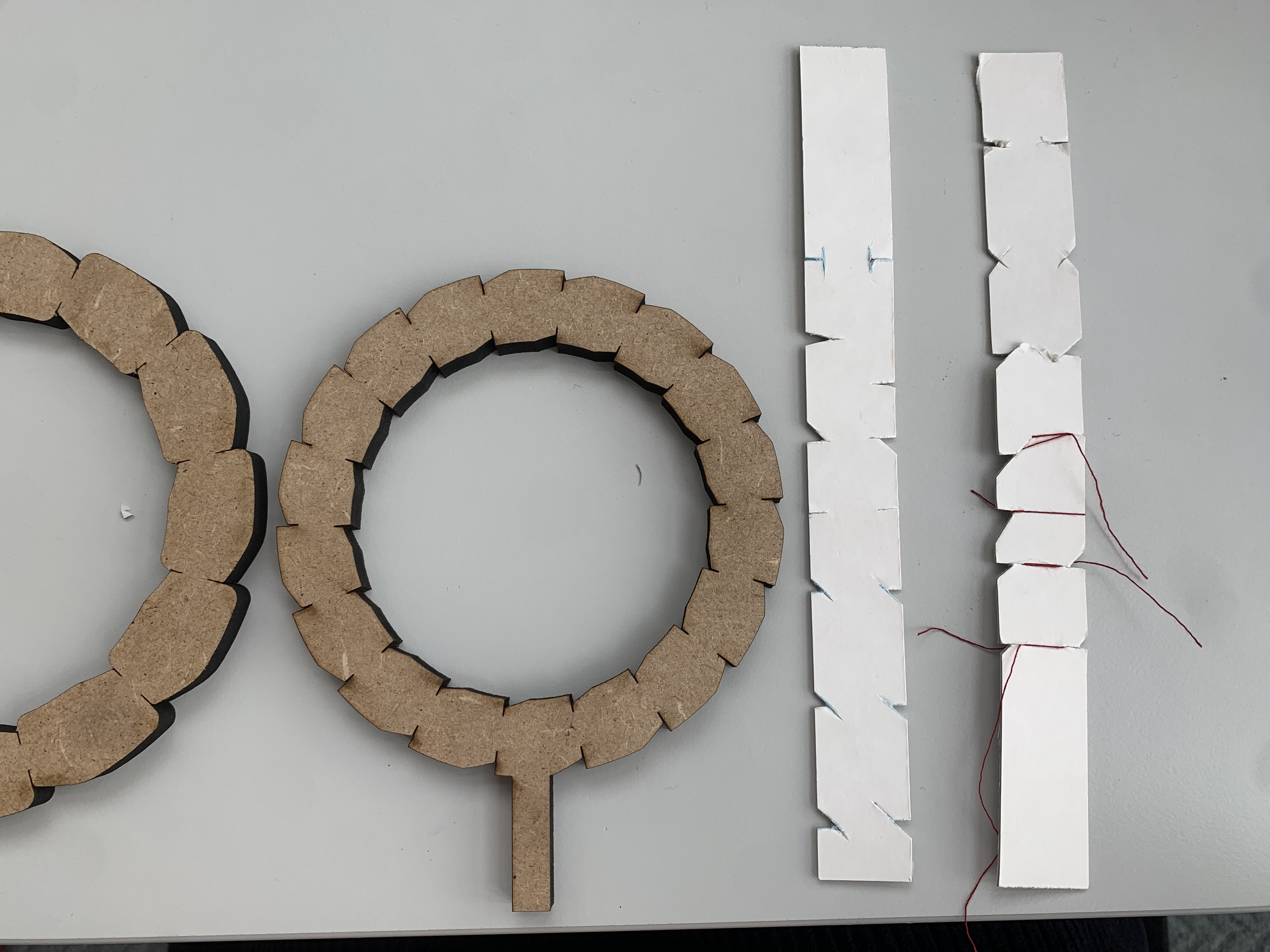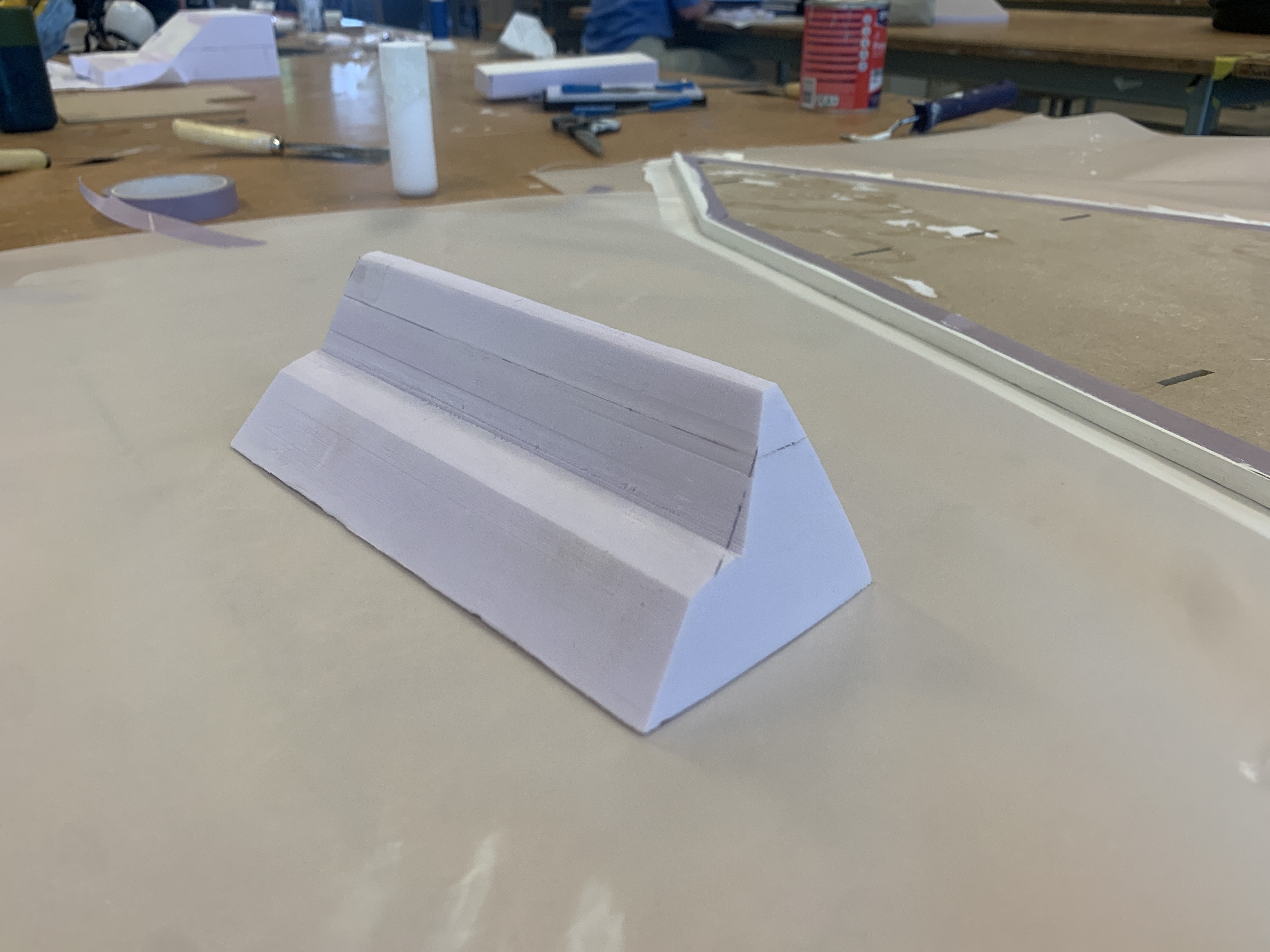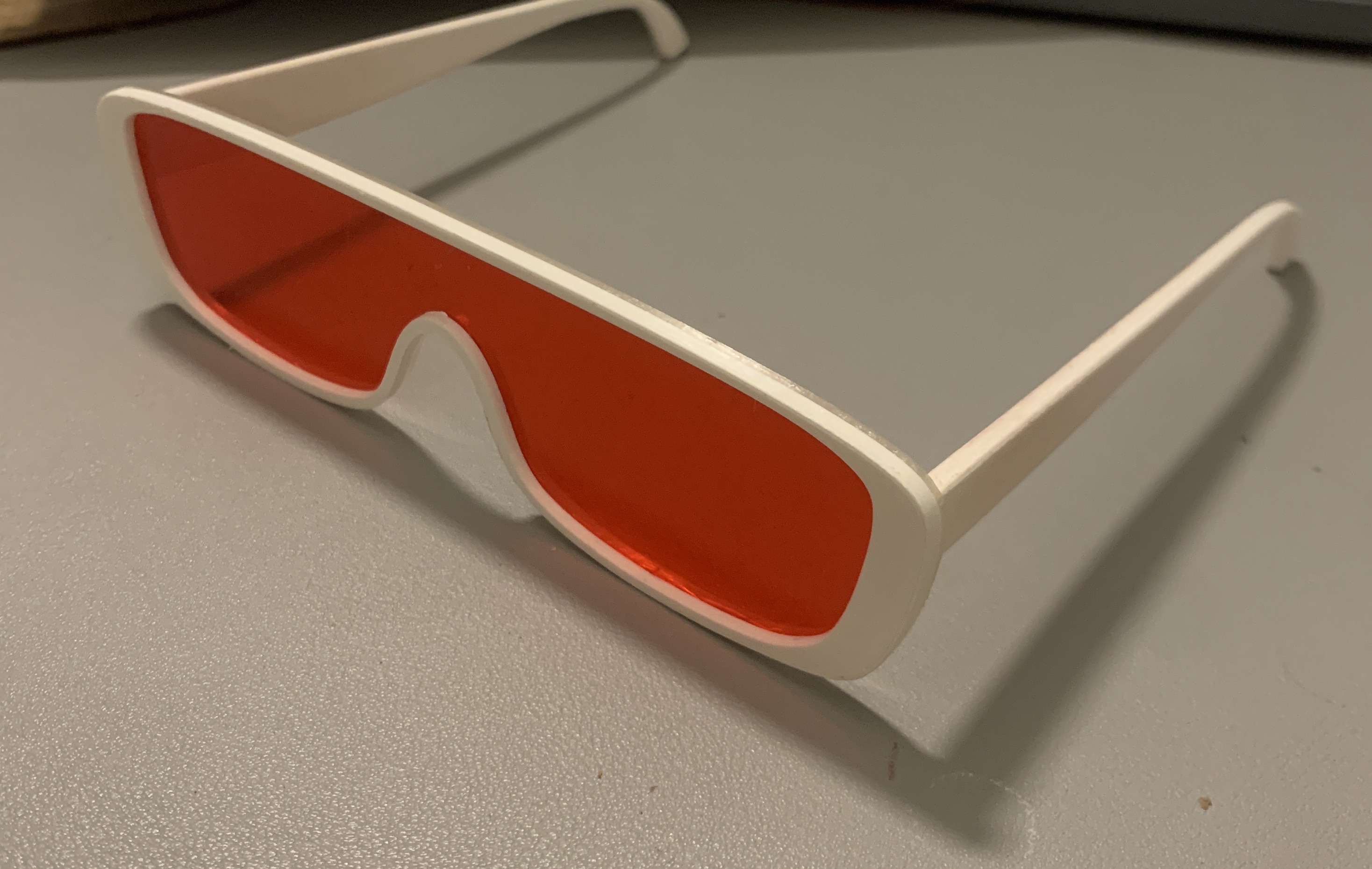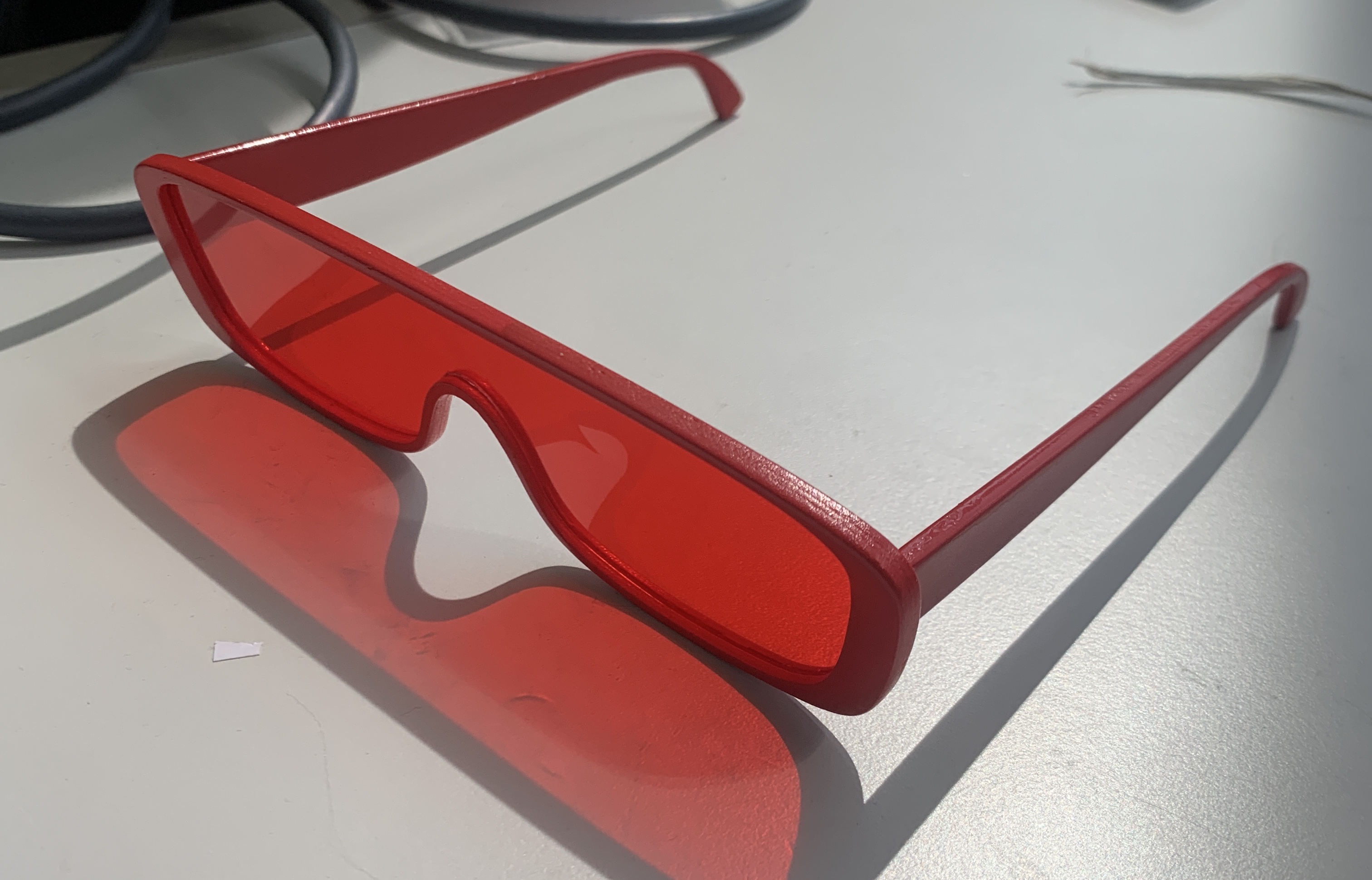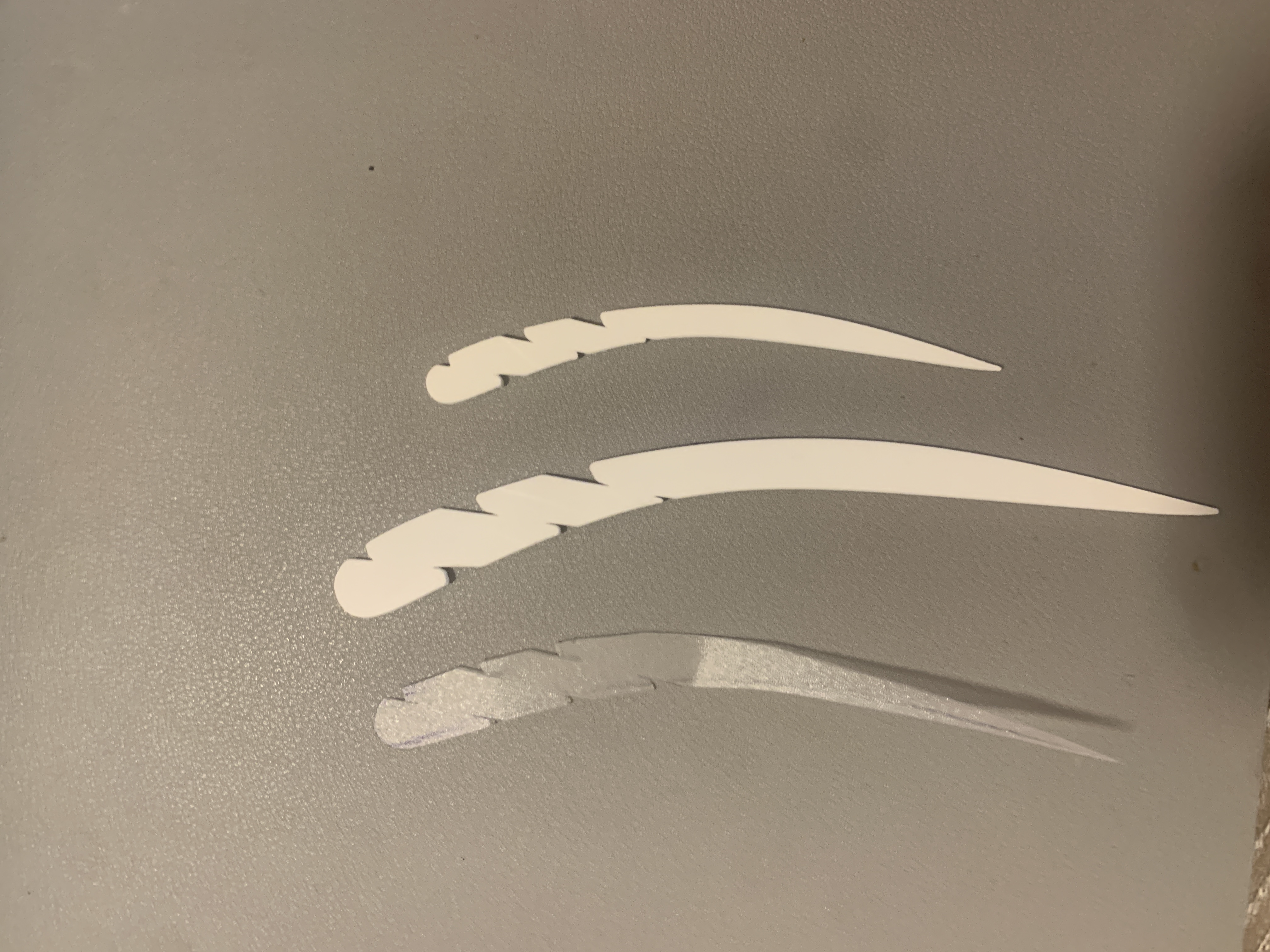Weave
Discursive Design: Data physicalisation of invisible barriers faced by foreign residents navigating Dutch public systems
2023
Role: Designer & Researcher
Exhibition: Dutch Design Week, 2023
Keywords: discursive design, data physicalisation, cross-culture, participatory design, co-design, metaphors
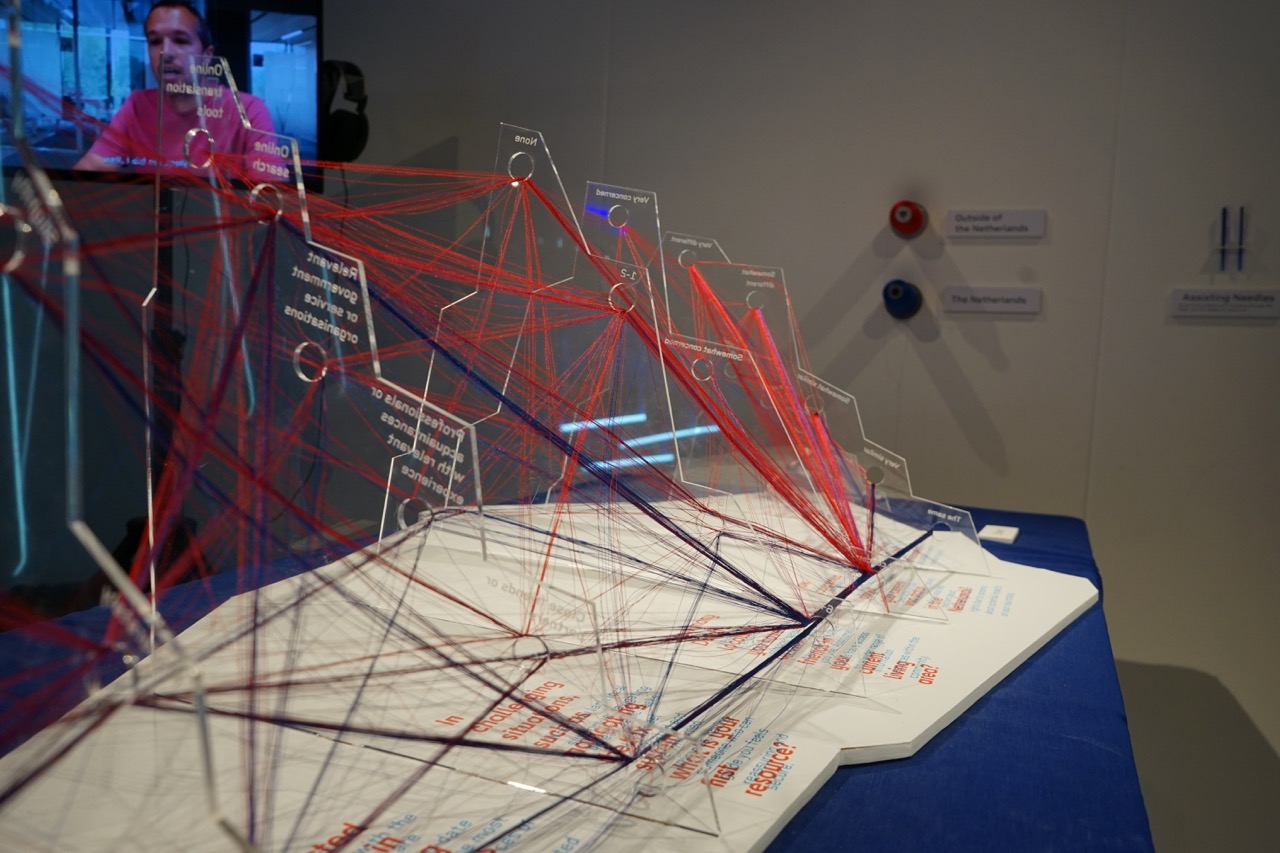
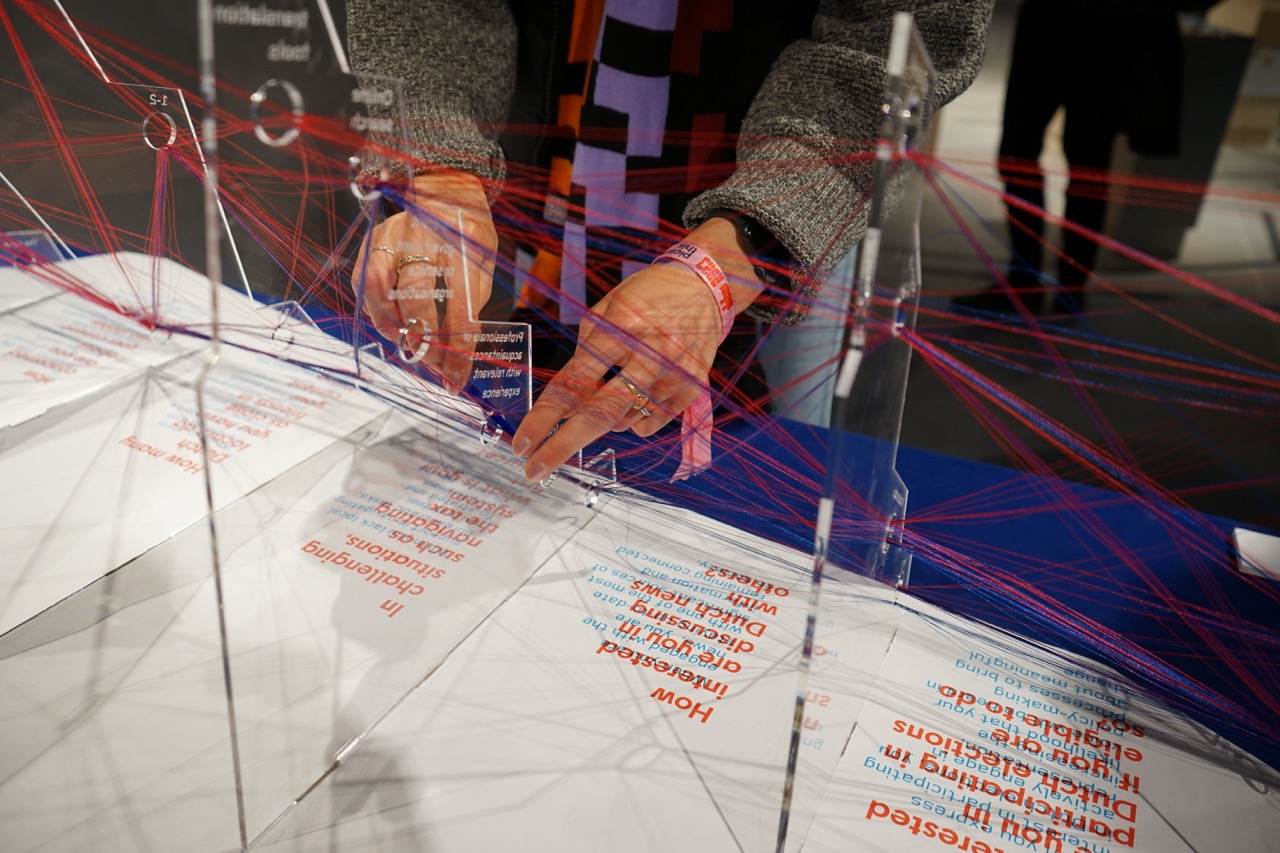
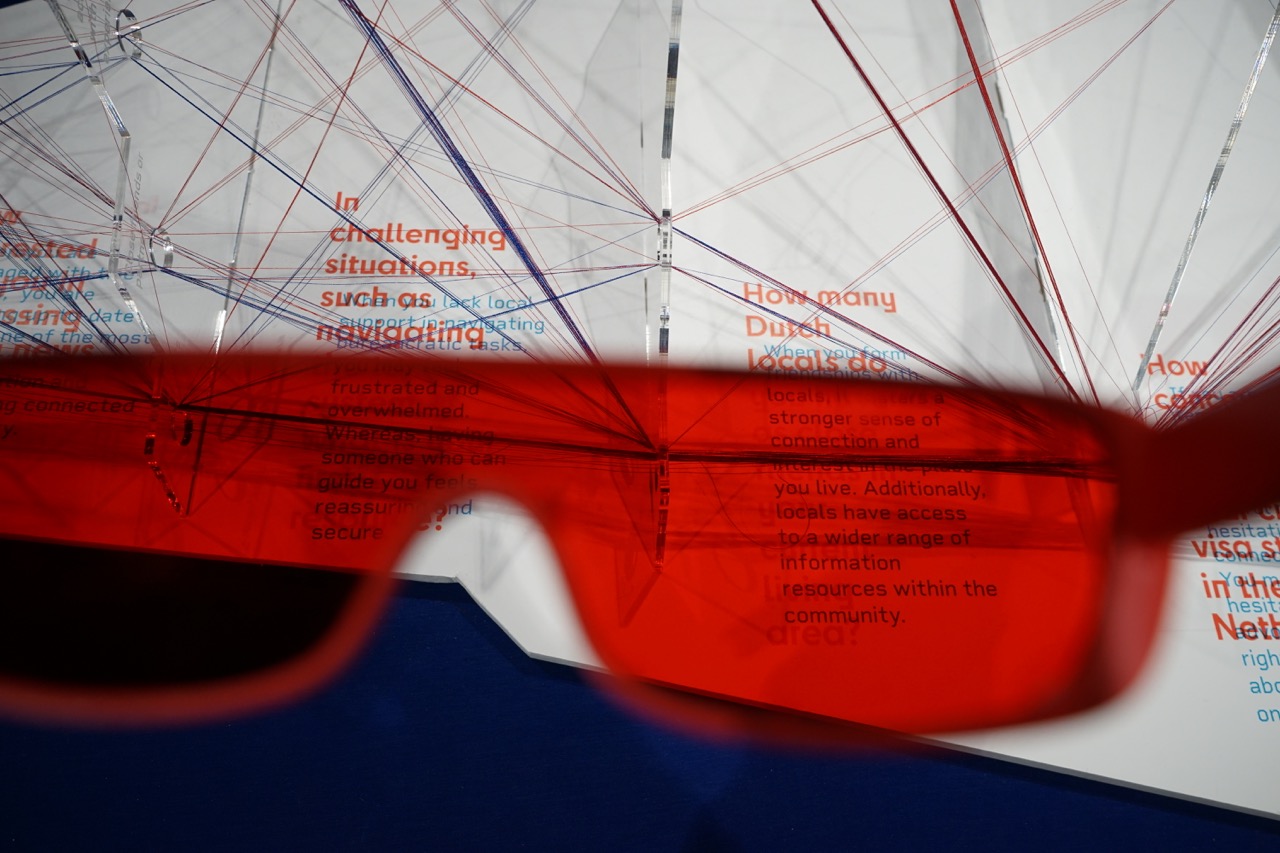
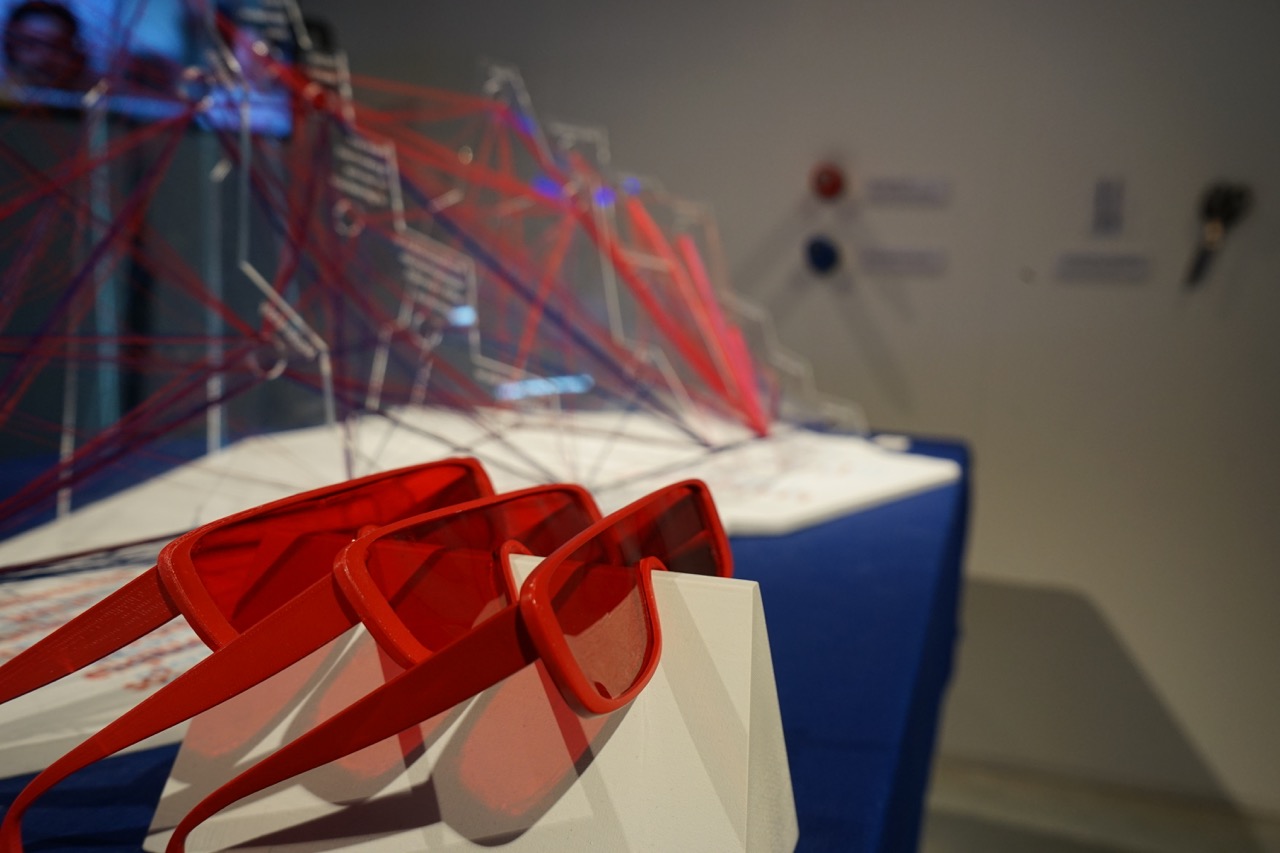
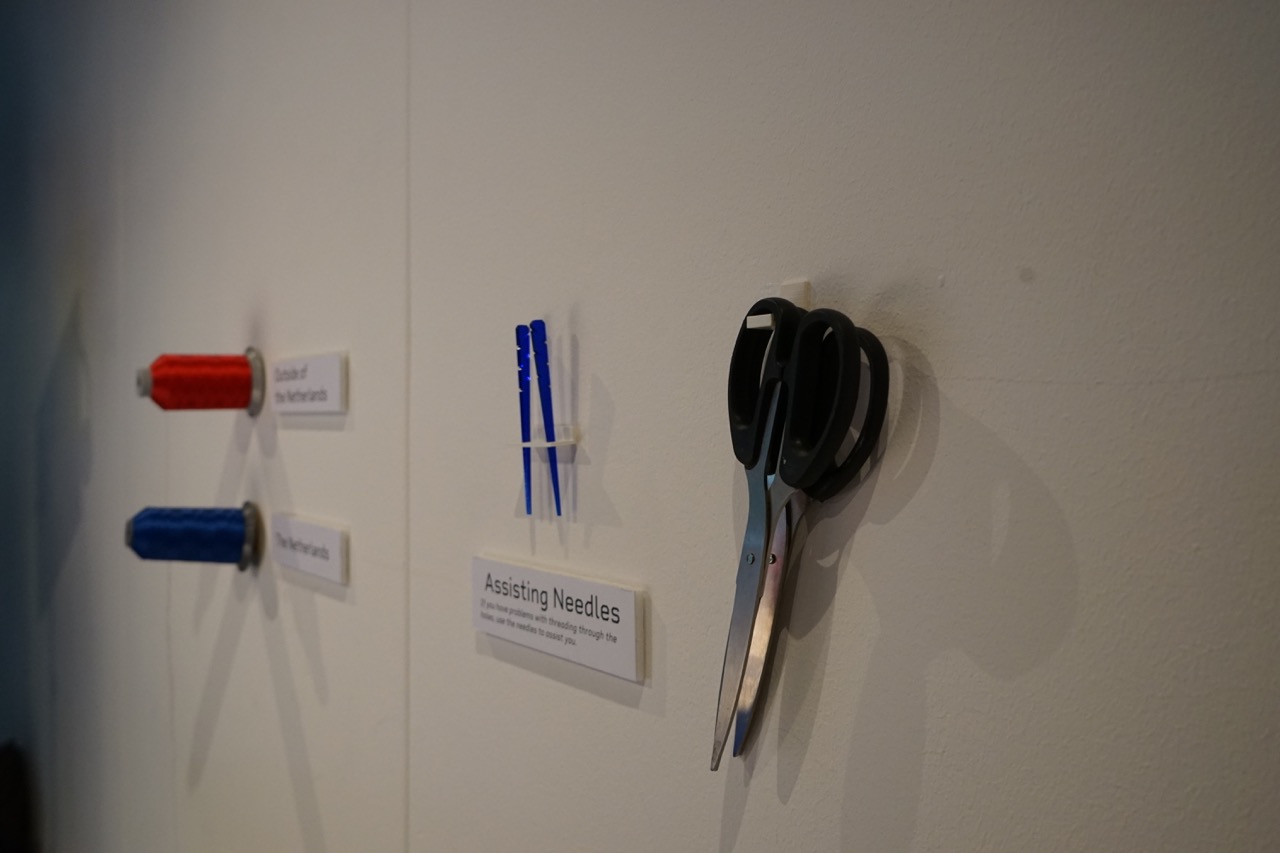
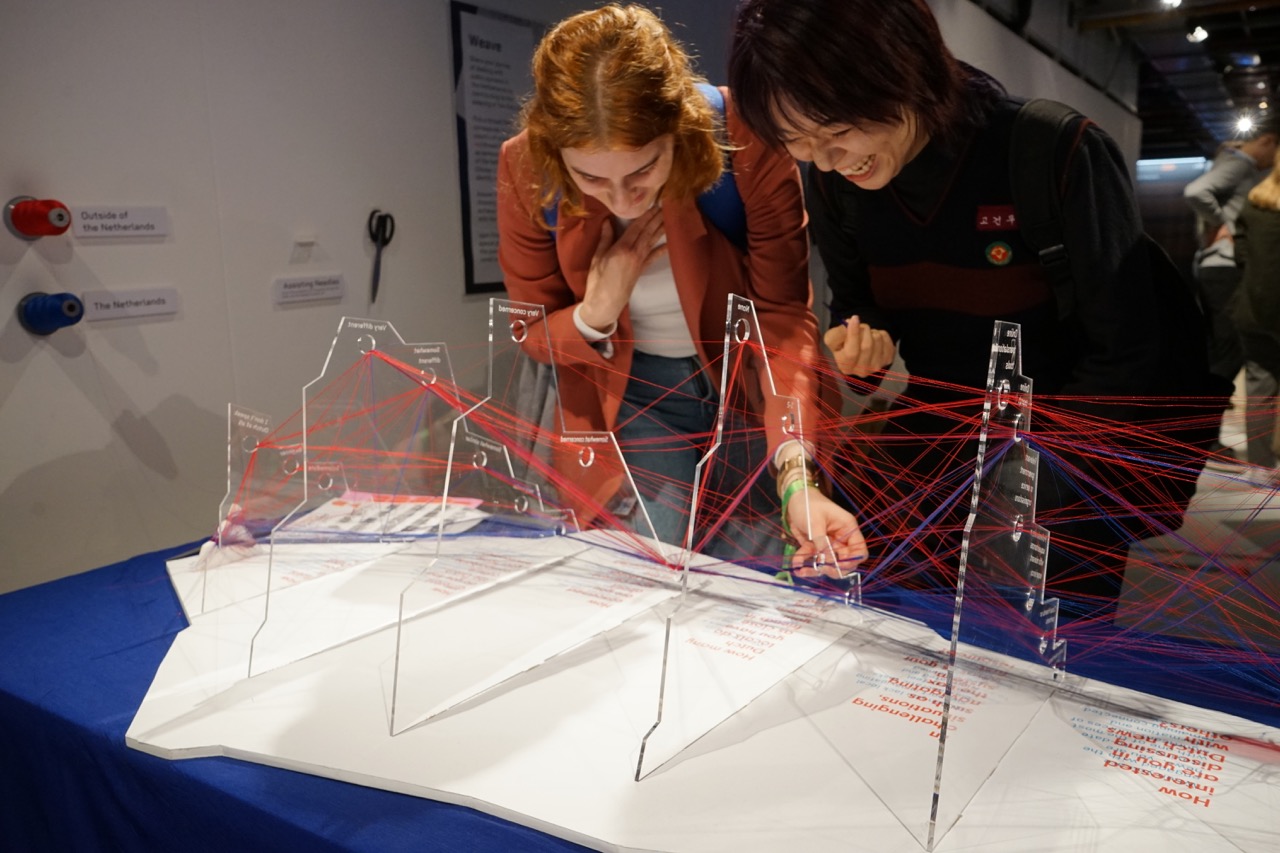
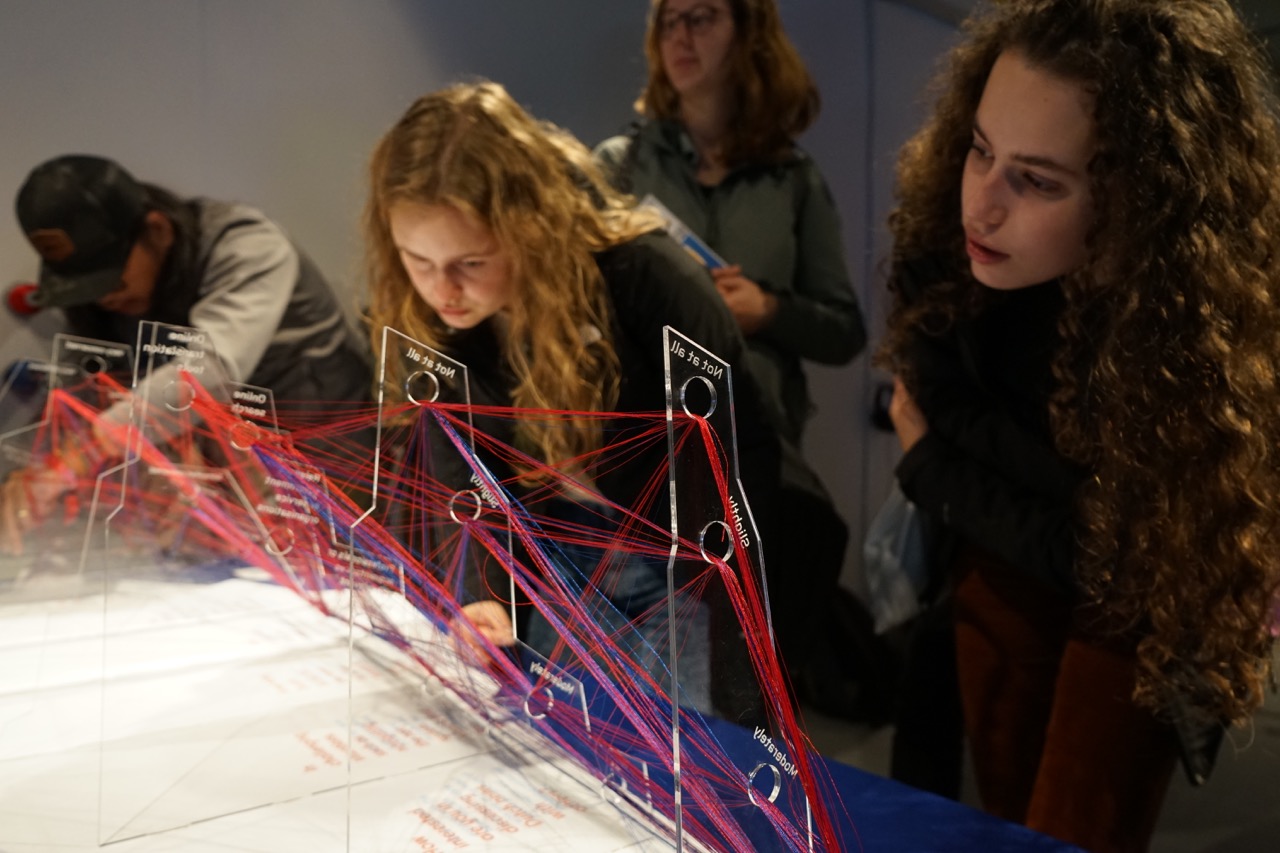
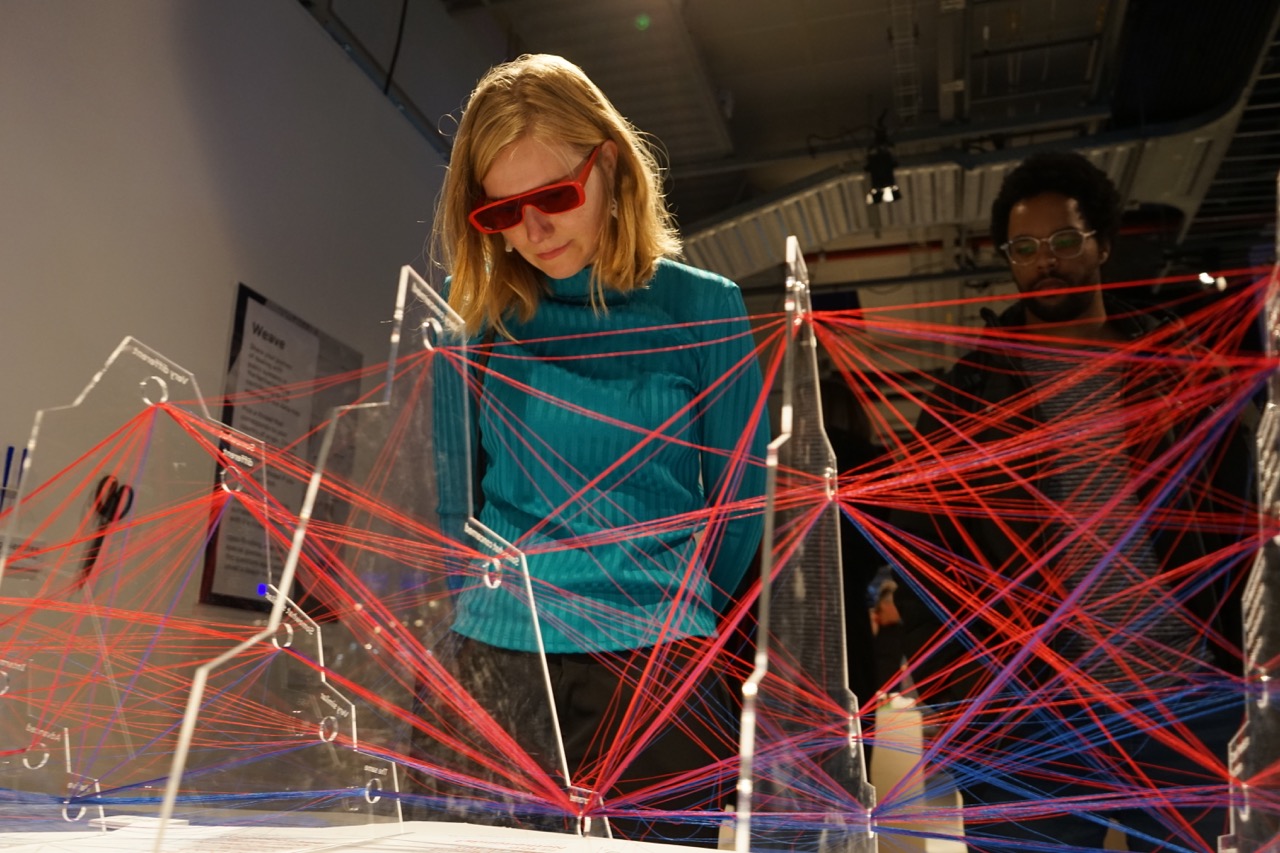
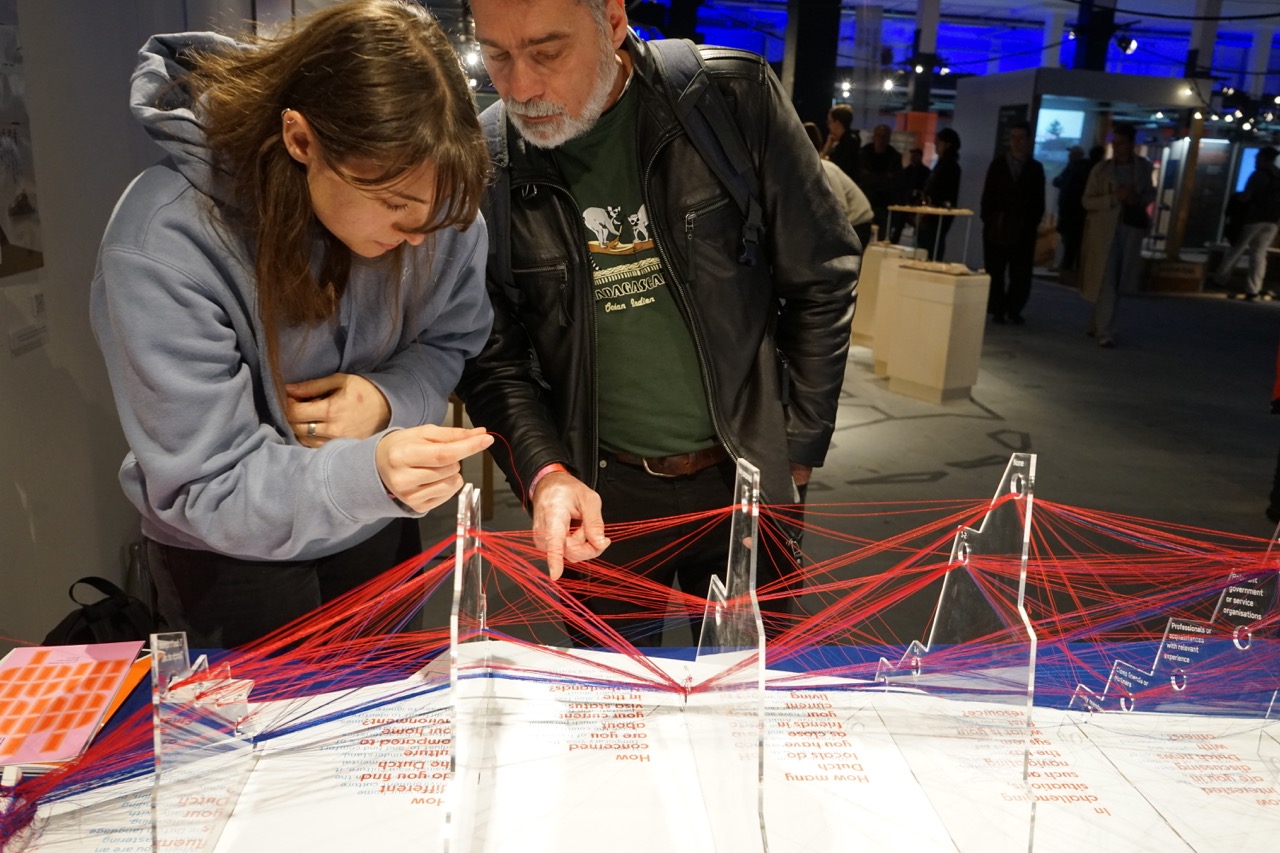
I've spent the last 8 years living abroad, now I am one of 401,351 immigrants in the Netherlands (Statistics Netherlands, 2022). The feeling of being constantly lost and confused when navigating the system inspired me this project. I often thought to myself “If I could just speak fluent Dutch, all my troubles navigating the Dutch public systems would disappear”. However, When foreign-born adults navigate the Dutch public systems, language was the most visible barriers, tip of the iceberg, while underneath the surface, there lies many invisible barriers, such as visa, cultural differences, local social network, connection with local news, politics etc.
Weave is a project that aim to raise the awareness of those invisible barriers through data physicalisation, and provide a space for audience to gain exposure to information, introspect, and engage in discussions. Participantes are invited to interact with the exhibit, contributing to the data map. People can pick a thread corresponding to their country of origin, and thread individual responses to each question. Upon finishing, they can wear the special glasses that unveil a deeper meaning of each question.
The project employs metaphors to help audiences interpret the discursive artefact. The more challenging options are placed higher to symbolise the effort required to climb over these metaphorical mountains. The entire design's shape is alike an iceberg, linking to the cultural iceberg model. The deeper audience go down the iceberg, the more invisible the barriers are. The glasses symbolises a shift in perspective, inviting viewers to put themselves in others' shoes and seeing from others' eyes, as all the hidden sentences start with “when you are”.
Weave is a project that aim to raise the awareness of those invisible barriers through data physicalisation, and provide a space for audience to gain exposure to information, introspect, and engage in discussions. Participantes are invited to interact with the exhibit, contributing to the data map. People can pick a thread corresponding to their country of origin, and thread individual responses to each question. Upon finishing, they can wear the special glasses that unveil a deeper meaning of each question.
The project employs metaphors to help audiences interpret the discursive artefact. The more challenging options are placed higher to symbolise the effort required to climb over these metaphorical mountains. The entire design's shape is alike an iceberg, linking to the cultural iceberg model. The deeper audience go down the iceberg, the more invisible the barriers are. The glasses symbolises a shift in perspective, inviting viewers to put themselves in others' shoes and seeing from others' eyes, as all the hidden sentences start with “when you are”.
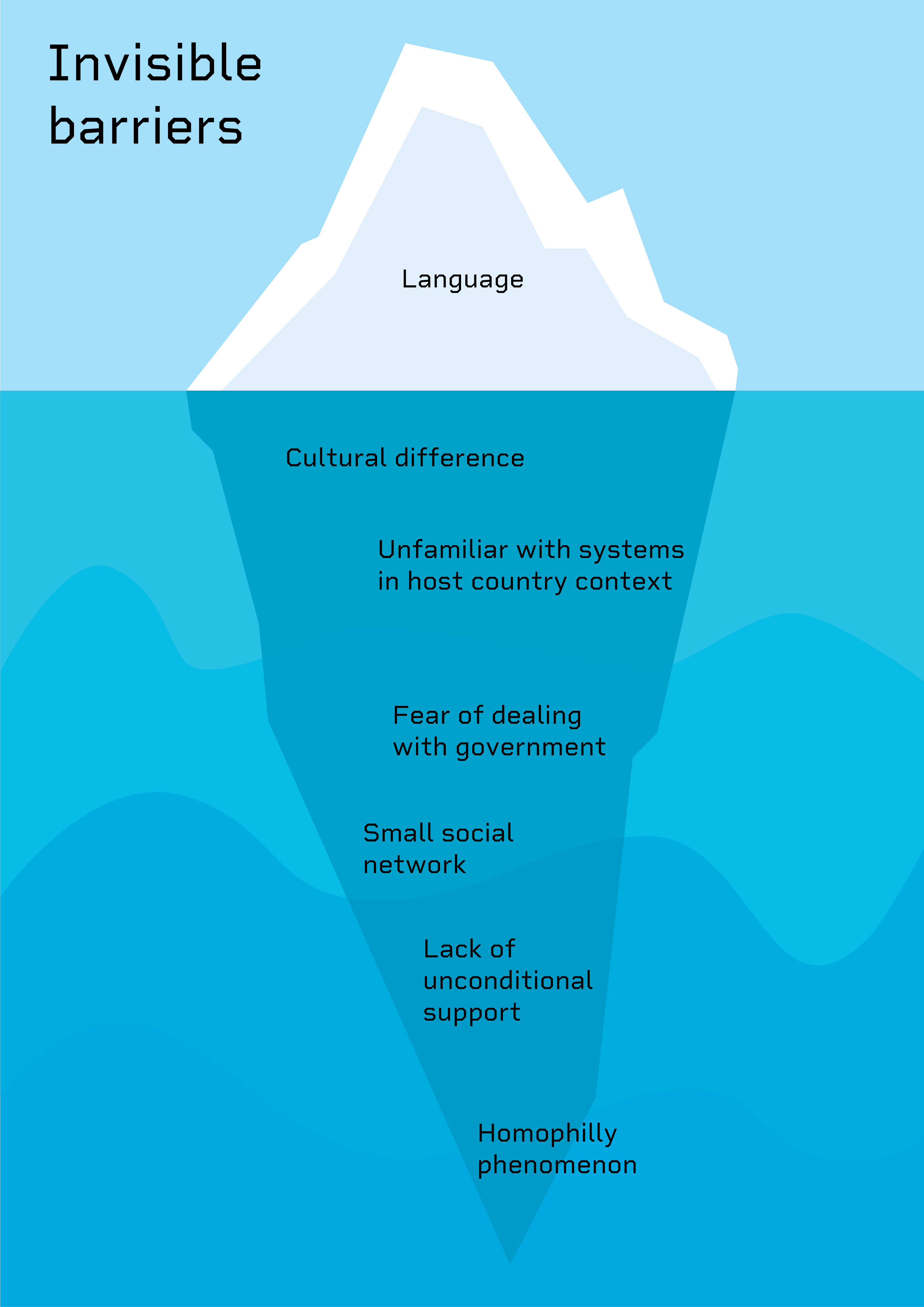
Design Process

Triple Diamond including three stages: define, design, develop
Define
The first stage centered on the question "What are the underlying barriers faced by foreign-residents when they navigating the Dutch public system and how are these interconnected at a systemic level?" The activities involved in this stage include relation mapping, eight semi-structured interviews with 5 foreign residents and 3 Dutch residents.
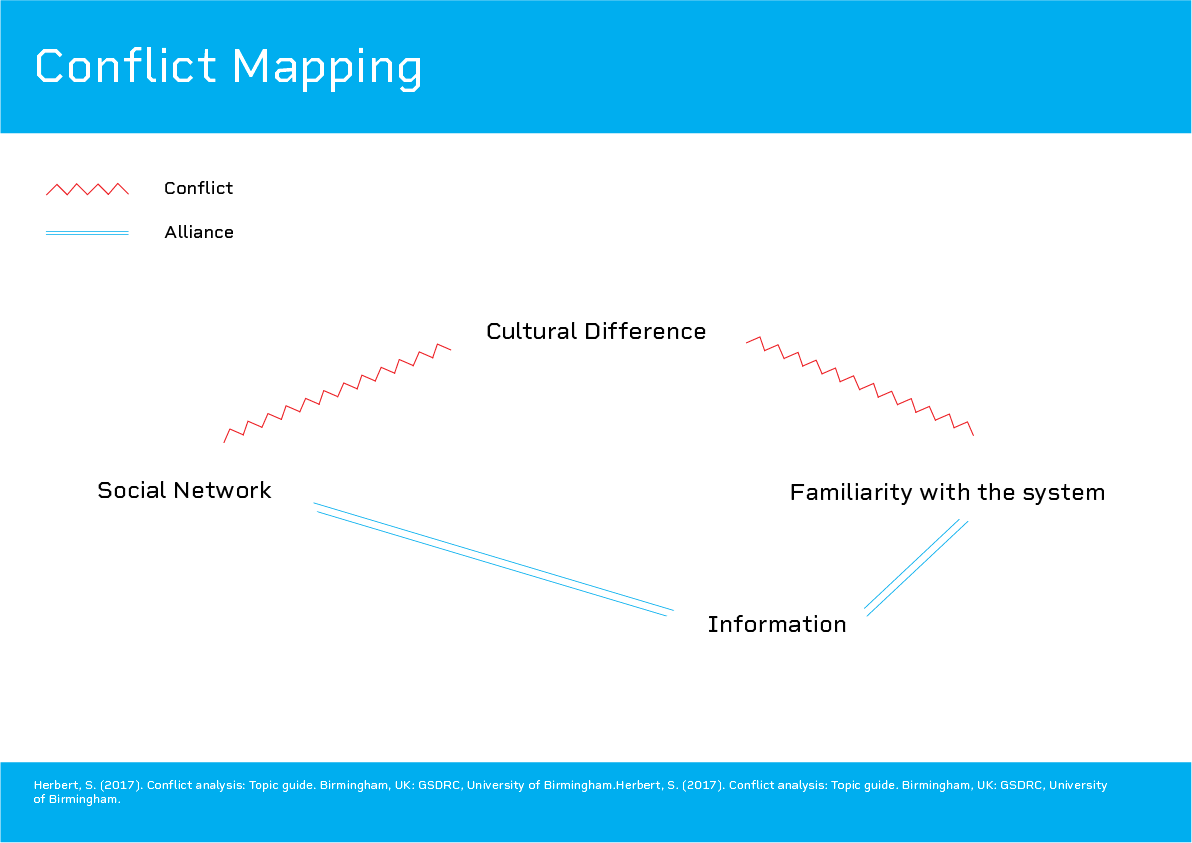
Semi-structured interviews

Conflict analysis map developed by the designer. Cultural differences were identified as conflicting with building a local social network and understanding the Dutch public system. However, the social network serves as a facilitator for acquiring relevant information, which aids in navigating the public system.
Based on this conflict map, a clear distinction between Dutch-born residents and foreign residents emerged. Generally speaking, Dutch residents encounter fewer cultural differences and have a bigger social network, which is highly beneficial in navigating the system. Contrarily, foreign residents typically face more significant cultural differences and have a smaller social network, which hinder the navigation process.Design
The second stage concentrates on the question "How can a discursive design artefact to be developed to address the design challenge?" and "How effective is the discursive artefact in terms of communication, awareness-raising, and audience reflection?". The activities involves ideation, sketching, user test with a low-fidelity prototype and qualitative data analysis.
Four ideations
Exploring different forms of data physicalisation and the threading method through the mountains
Low Fidelity Prototype User Test
Develop
The final stage addresses the question "How can the aesthetics and interaction of the current concept be improved to construct a museum quality prototype?". This improvement is aimed at attracting more participation, thus solidifying data patterns and increasing impact. Activities in this stage involved multiple iterations of form, material, interface exploration, as well as making.
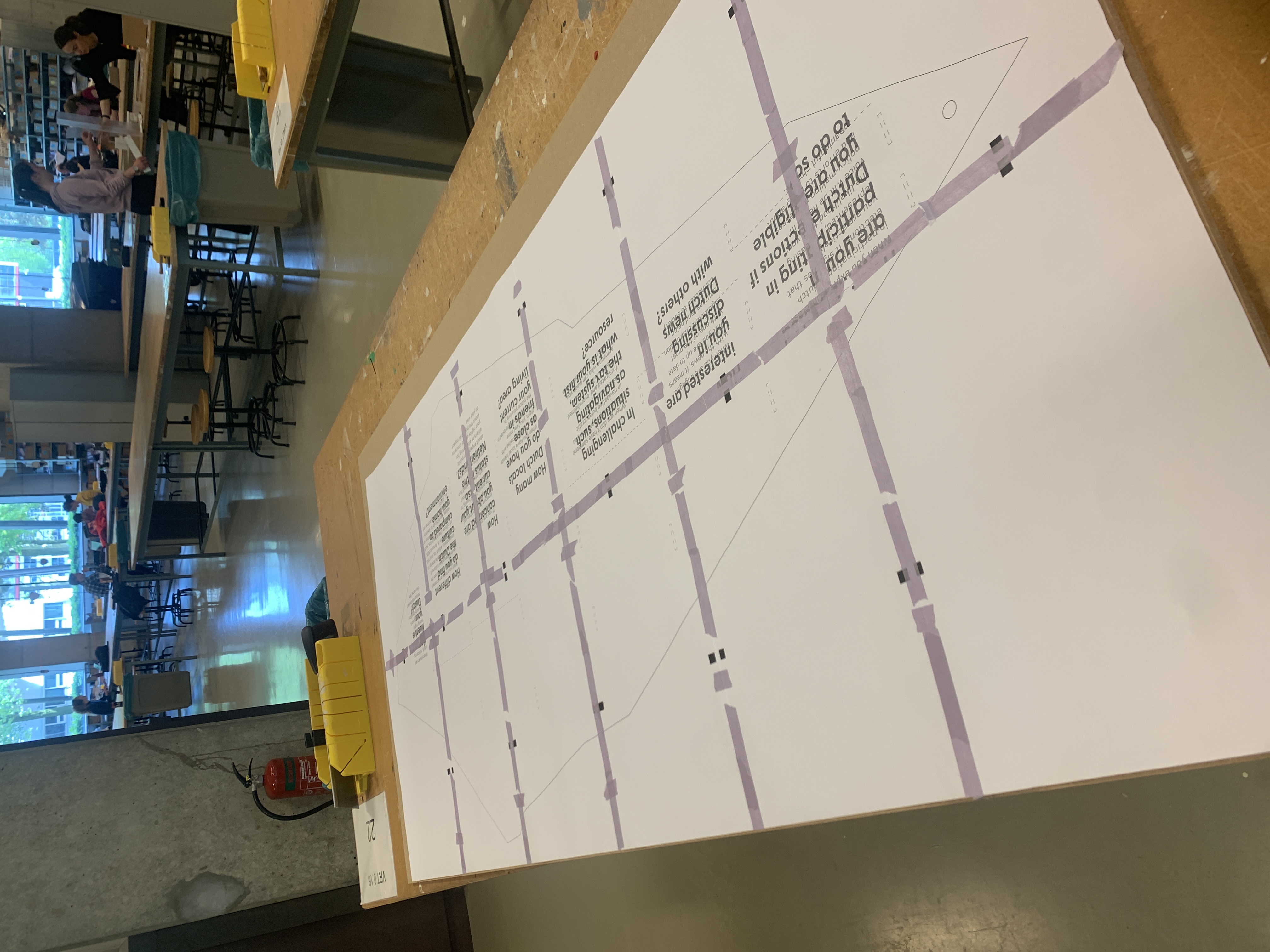
Attaching the reference image to the wood base
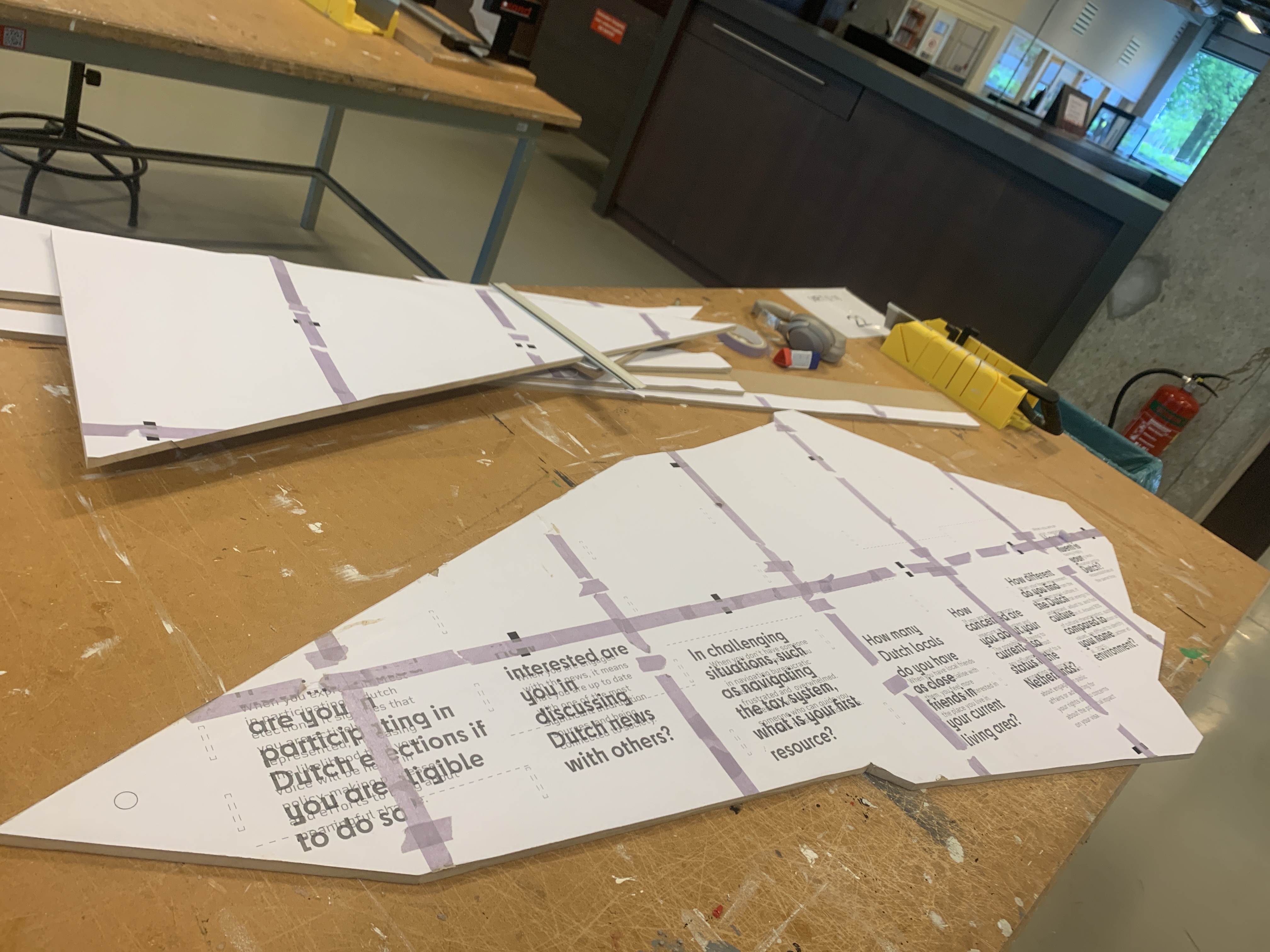
Cutting the outer shape
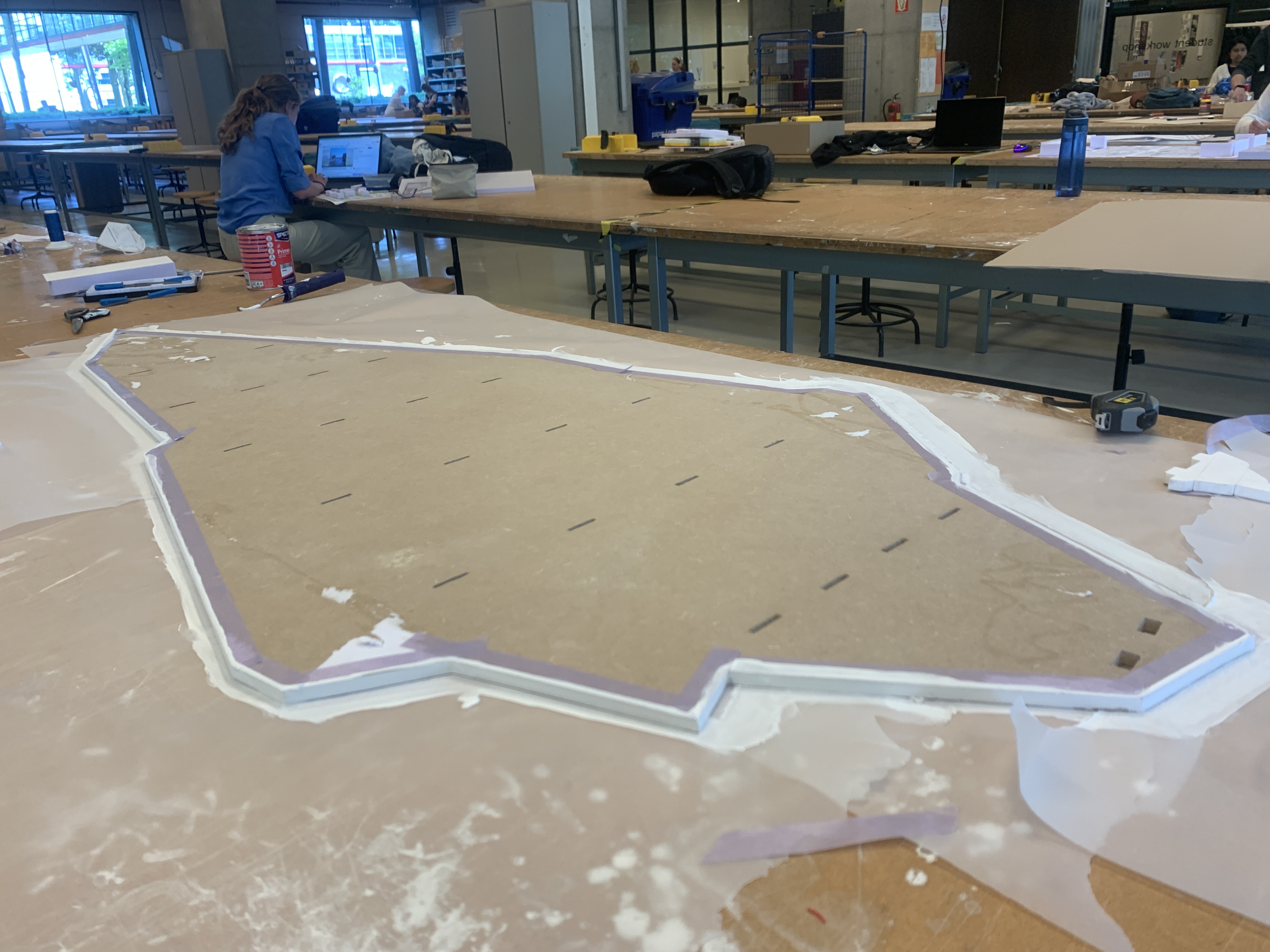
Cutting the slots and painting the edge
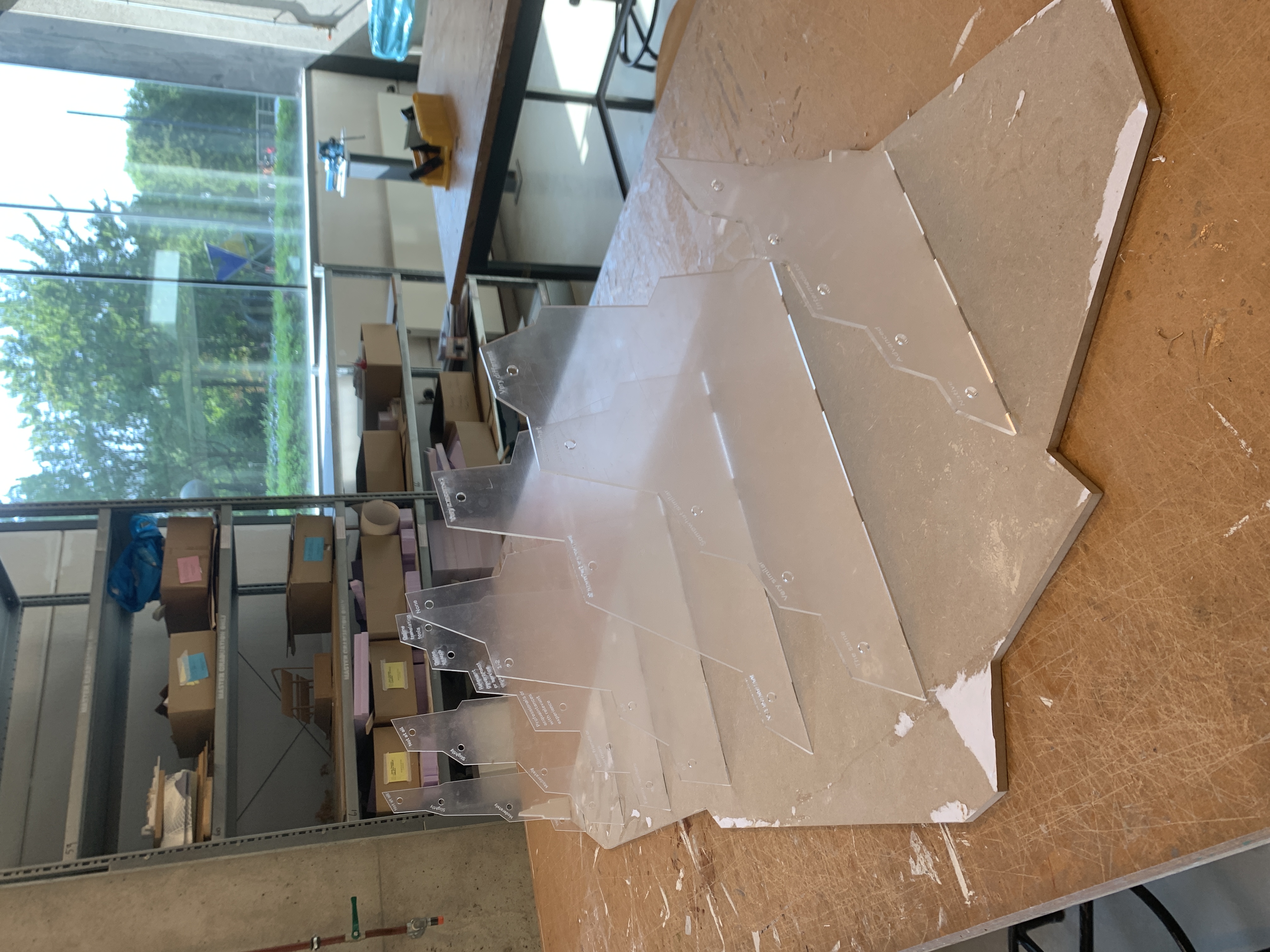
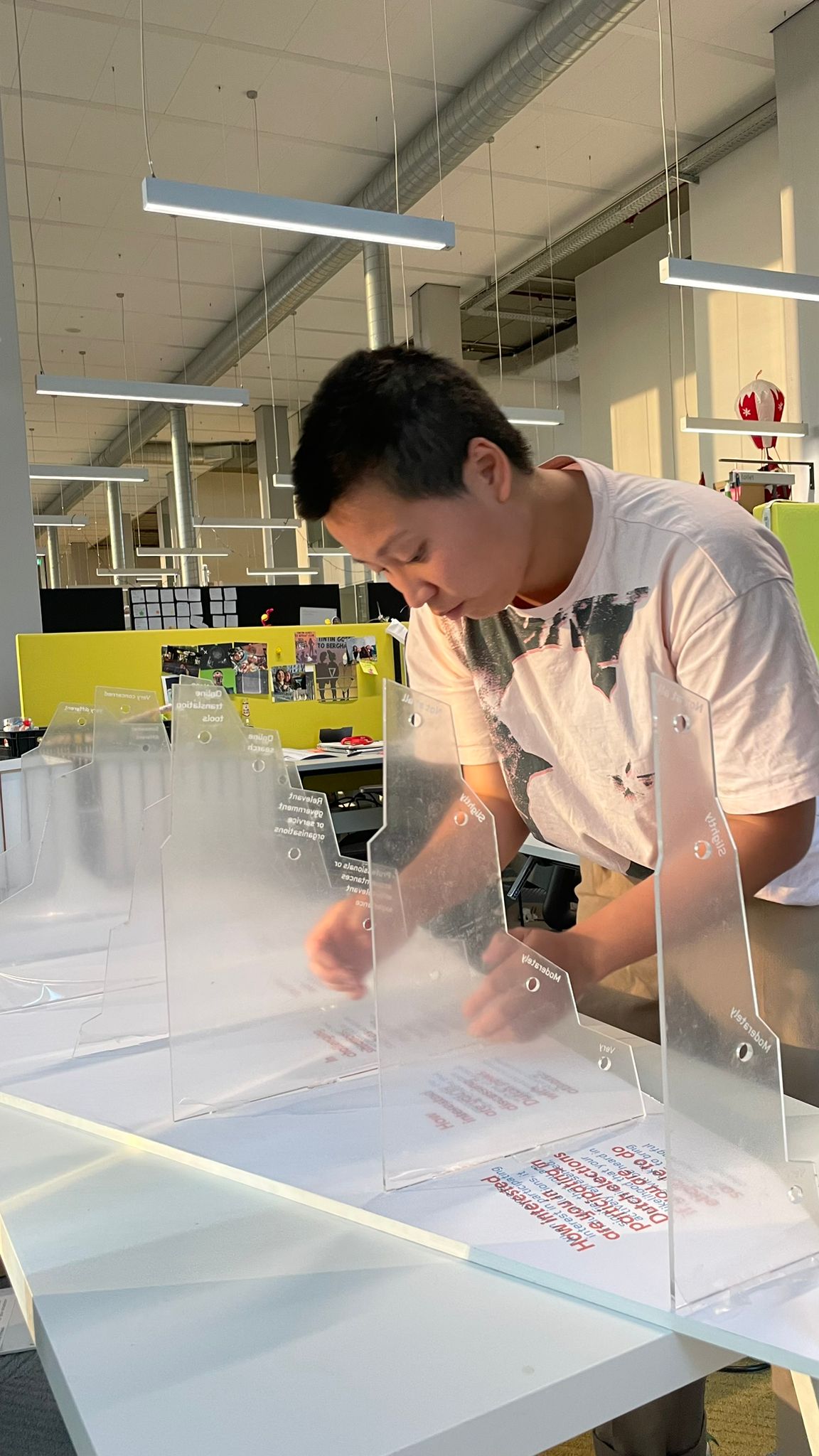
Assembling
Exploration of other parts of the artefact
Theory behind Questions
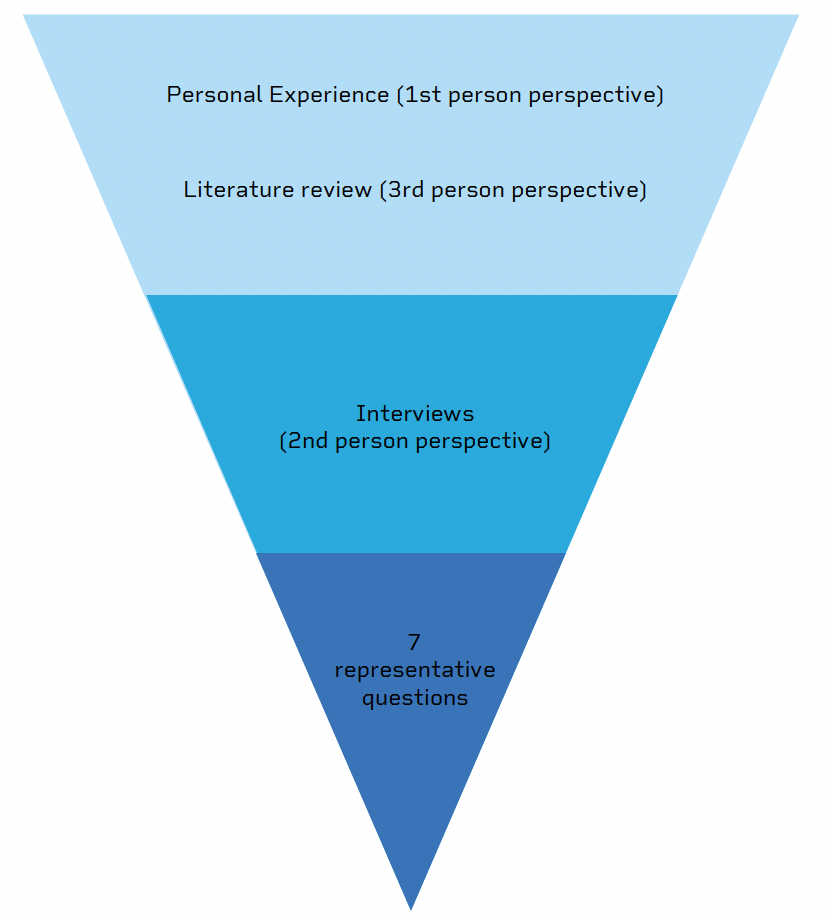
Based on the literature, interviews and personal experience, 7 representative questions are chose to visualise the invisible barriers that foreign residents experience in the Netherlands:
- How fluent is your Dutch?
- How different do you find the Dutch culture compared to your home environment?
- How concerned are you about your current visa status in the Netherlands?
- How many Dutch locals do you have as close friends in where you live?
- In challenging situations, such as dealing with tax matters, what is your first resource?
- How interested are you in discussing Dutch news with others?
- How interested are you in participating in Dutch elections if you are eligible to do so?
The theory associated with each question are:
- How fluent is your Dutch? The language barrier is visible and the first barrier for foreign-born residents. Language is a key vehicle for migrant to access and experience services of the host society smoothly and the competency facilitates the sense of belonging (Erlinghagen et al., 2021). People generally need to rely on others or tools to navigate.
- How different do you find the Dutch culture compared to your home environment? Cultural distance is defined as the degree to which shared norms and values differ from one country to another (Hofstede, 2001), which influences the design of public service system. Sociocultural adaptation, number of close friends and perceived cultural distance are interrelated. The larger the difference between two cultures, the migrant needs to expend more cognitive efforts in adapting to the difference (Demes & Geeraert, 2014) and is likely to have less close friends (Erlinghagen et al., 2021). Meanwhile, 90% of cultural characteristics, such as non-verbal communication or values, are difficult to identify and easy to ignore (Lachner et al., 2015) and can easily become a significant invisible barrier.
- How concerned are you about your current visa status in the Netherlands? Although most of interview participants are considered as highly skilled immigrant, they still reported the fear of dealing with government and the insecurity in the system. The possibility of having to leave the country without any influence may lead to hesitation in fully engaging in public affairs or advocating for the rights due to concerns about the potential impact on the visa. The subconscious fear invisibly hindered foreign-born residents gain the familiarity with the system through trial and error.
- How many Dutch locals do you have as close friends in where you live? Friendships are indispensable to individuals’ opportunities and to their integration into the society (Erlinghagen et al., 2021). Additionally, locals have more information resources within the society. For example, locals have more knowledge in applying for benefits and solving certain issues, like housing or tax. Having strong social network with the locals makes it easier for migrant to navigate the system and have access to broader opportunities in the emigration country (Erlinghagen et al., 2021).
- In challenging situations, such as dealing with tax matters, what is your first resource? Both Dutch and foreign residents struggled with bureaucracy and jargon when dealing with taxes. However, many Dutch natives first seek help from parents, relatives, partners, or close friends. On the other hand, foreign young adults typically translate Dutch documents or search for solutions online as their initial response. Migrants, especially new arrivals, are less likely to have family and strong ties in the host country. Handling tax issues requires support from strong ties due to the sensitive and personal nature of the information involved, which might be uncomfortable to share with weak ties (Erlinghagen et al., 2021). Failure to address the bureaucratic task can lead to feelings of loneliness and powerlessness.
- How interested are you in discussing Dutch news with others? The significance of the local news is underestimated. Local news is an important channel for people to access information source. Keeping update to the news and having a social discussion with others are important for people to have access to relevant information sources and feel socially connected.
- How interested are you in participating in Dutch elections if you are eligible to do so? Although there are legislation prohibiting foreign residents from voting, the clause "if you are eligible to do so" was added to focus on the pure motivation aspect of voting. This question focuses on connecting with the society on a next level, and being represented in the country’s decision making. It serves as an end question because all previous answers potentially influence the response to this last question.
References:
Demes, K. A., & Geeraert, N. (2014). Measures Matter: Scales for Adaptation, Cultural Distance, and Acculturation Orientation Revisited. Journal of Cross-Cultural Psychology, 45(1), 91–109. https://doi.org/10.1177/0022022113487590
Statistics Netherlands (2022). How many people immigrate to the Netherlands? Statistics Netherlands. https://www.cbs.nl/en-gb/dossier/migration-and-integration/how-many-people-immigrate-to-the-netherlands-
Tharp, B. M., & Tharp, S. M. (2019). Discursive Design: Critical, Speculative, and Alternative Things. Amsterdam University Press.
Lachner, F., von Saucken, C., ‘Floyd’ Mueller, F., & Lindemann, U. (2015). Cross-Cultural User Experience Design Helping Product Designers to Consider Cultural Differences. In P. L. P. Rau (Ed.), Cross-Cultural Design Methods, Practice and Impact (Vol. 9180, pp. 58–70). Springer International Publishing. https://doi.org/10.1007/978-3-319-20907-4_6
Erlinghagen, M., Ette, A., Schneider, N. F., & Witte, N. (Eds.). (2021). The Global Lives of German Migrants: Consequences of International Migration Across the Life Course. Springer International Publishing. https://doi.org/10.1007/978-3-030-67498-4
Herbert, S. (2017). Conflict analysis: Topic guide. Birmingham, UK: GSDRC, University of Birmingham.
Hofstede, G. (2001). Culture’s Consequences: Comparing Values, Behaviors, Institutions and Organizations Across Nations. SAGE.
